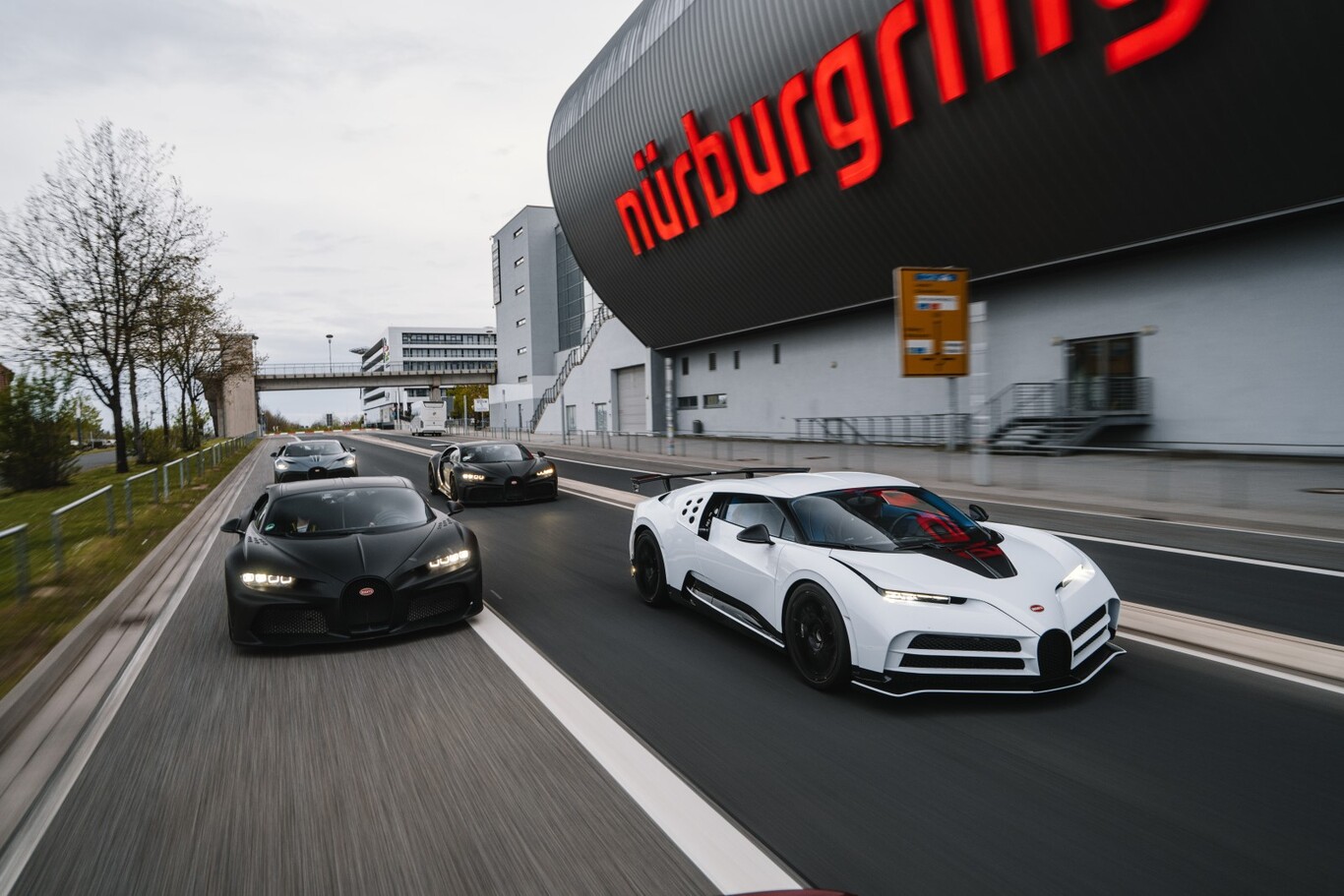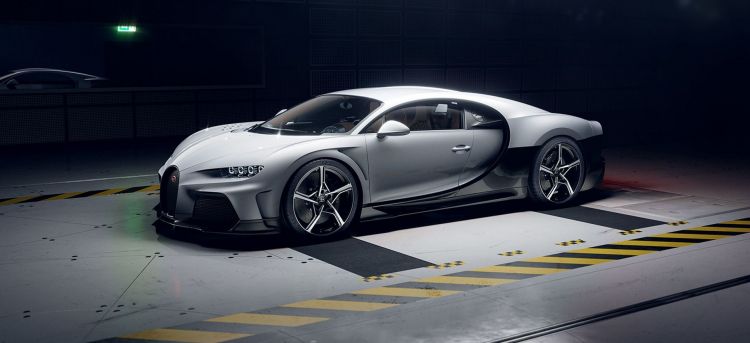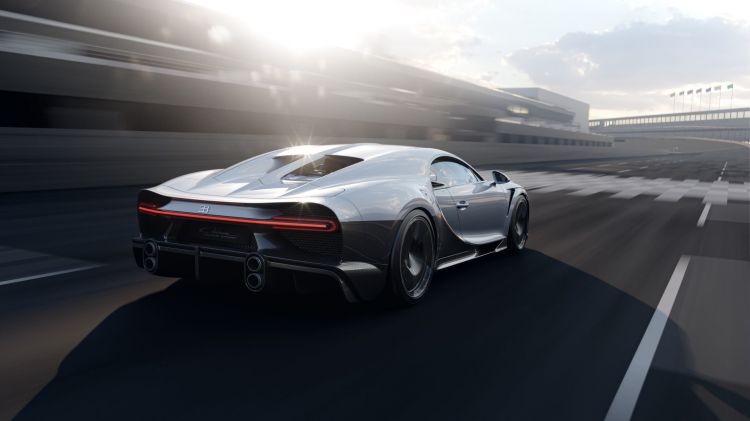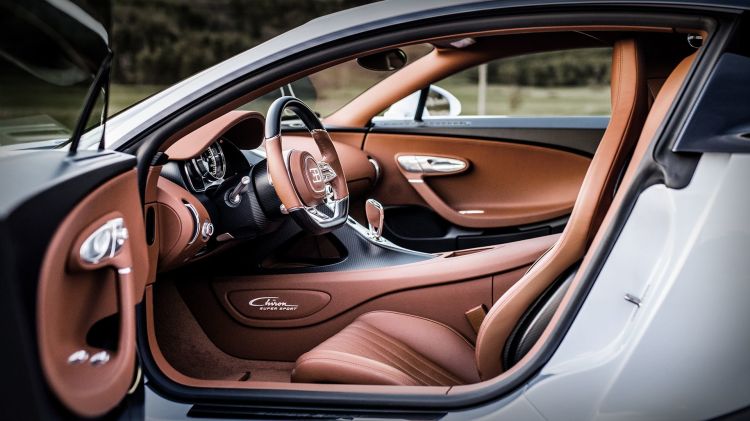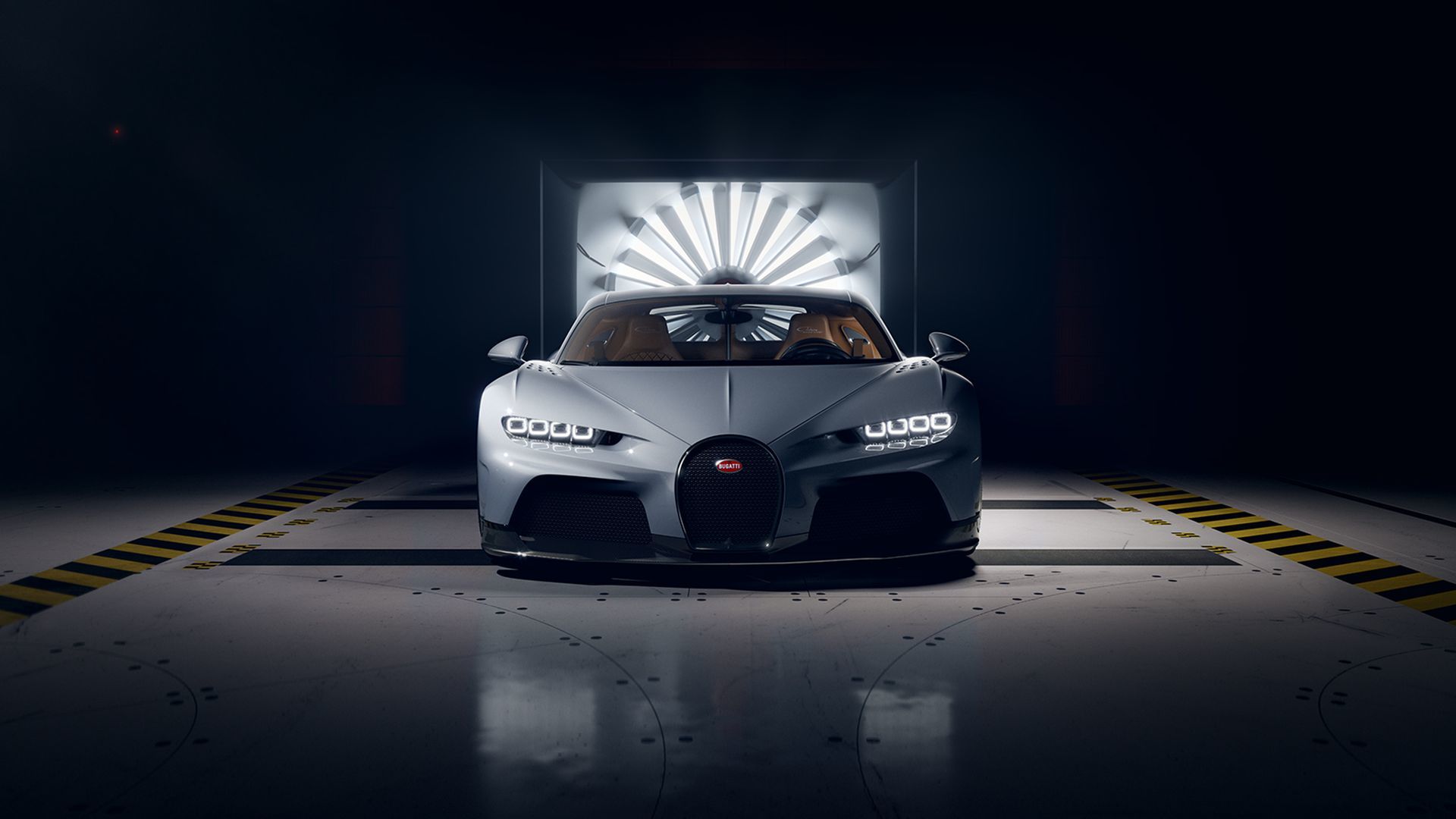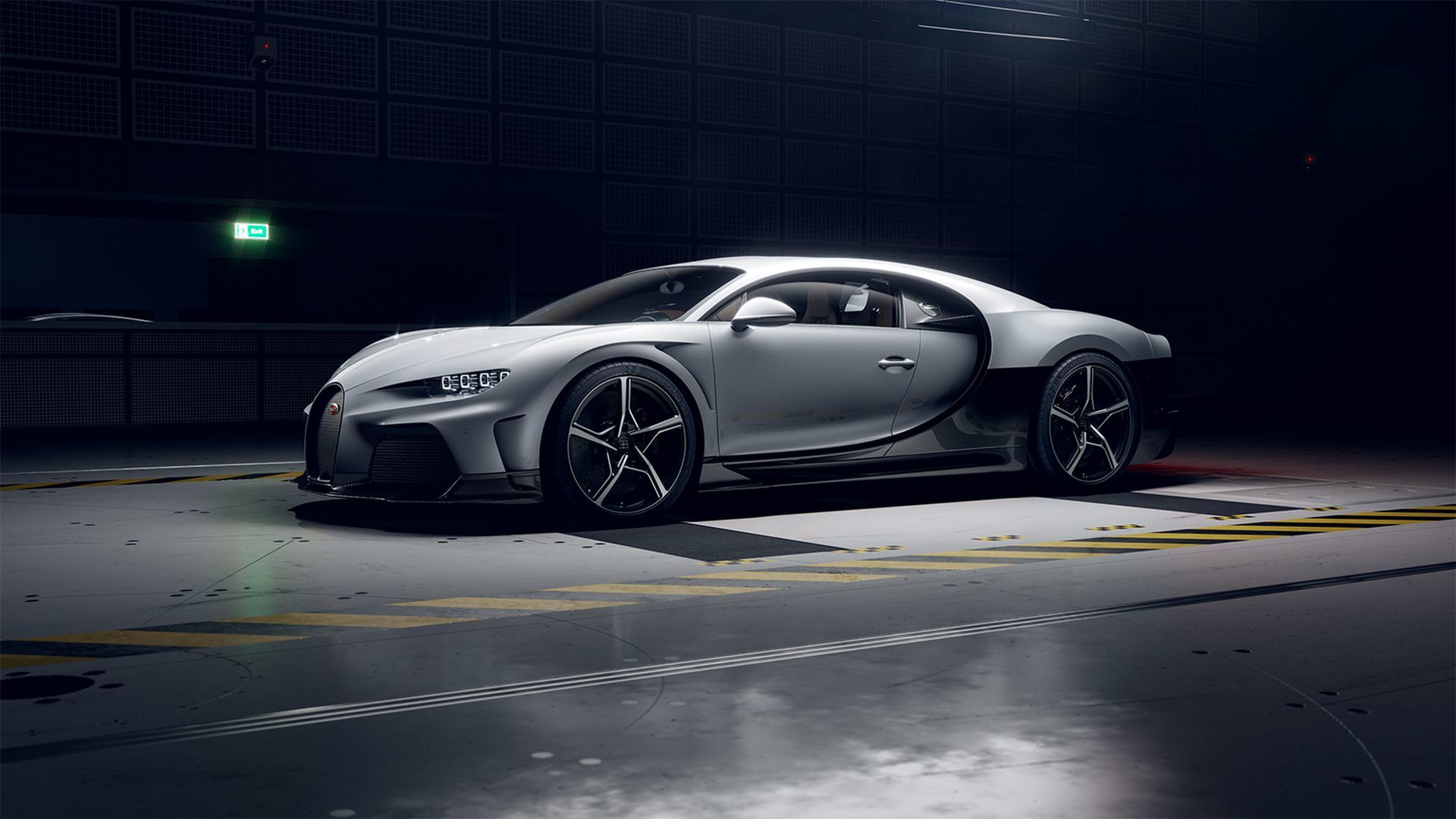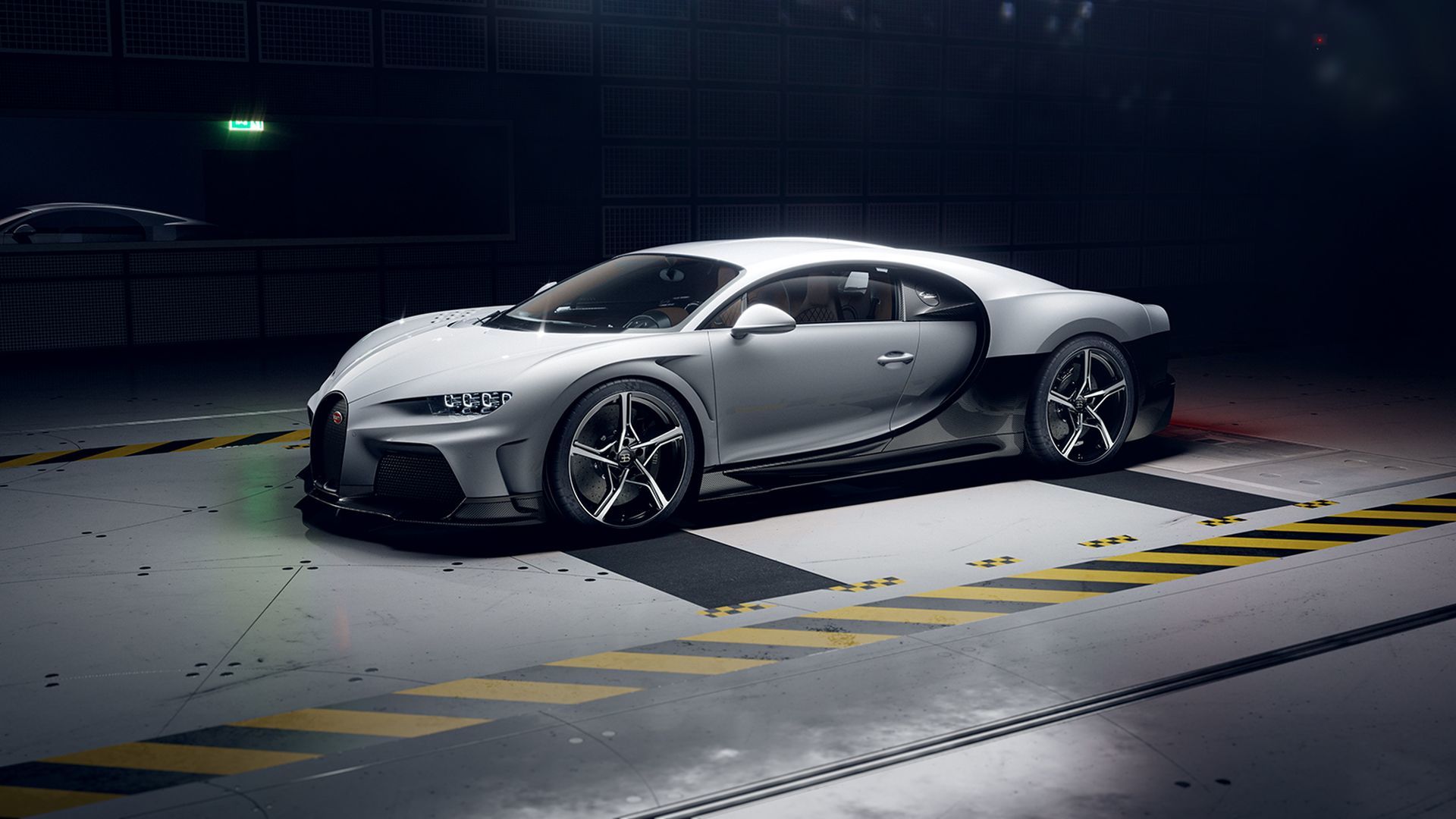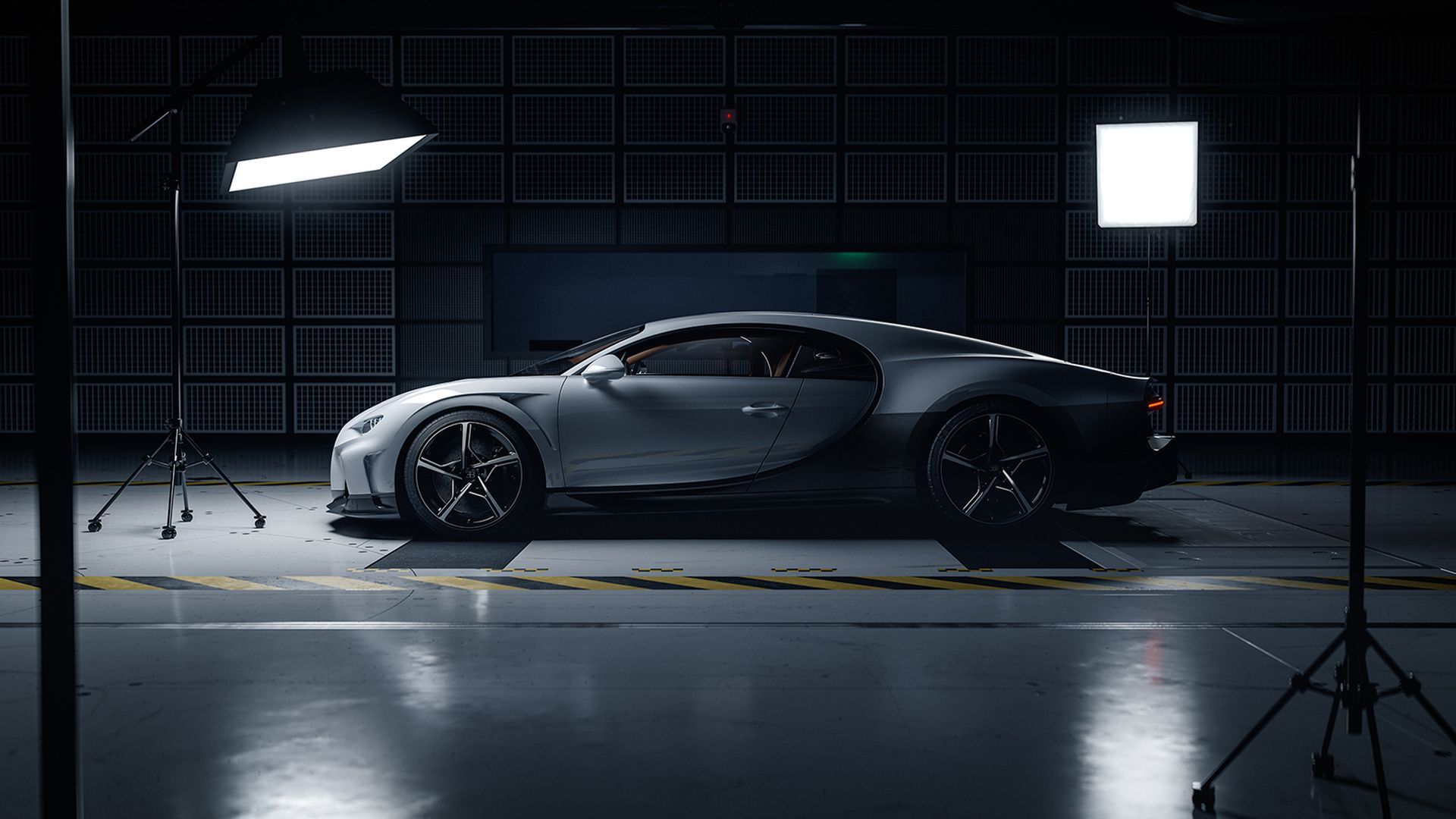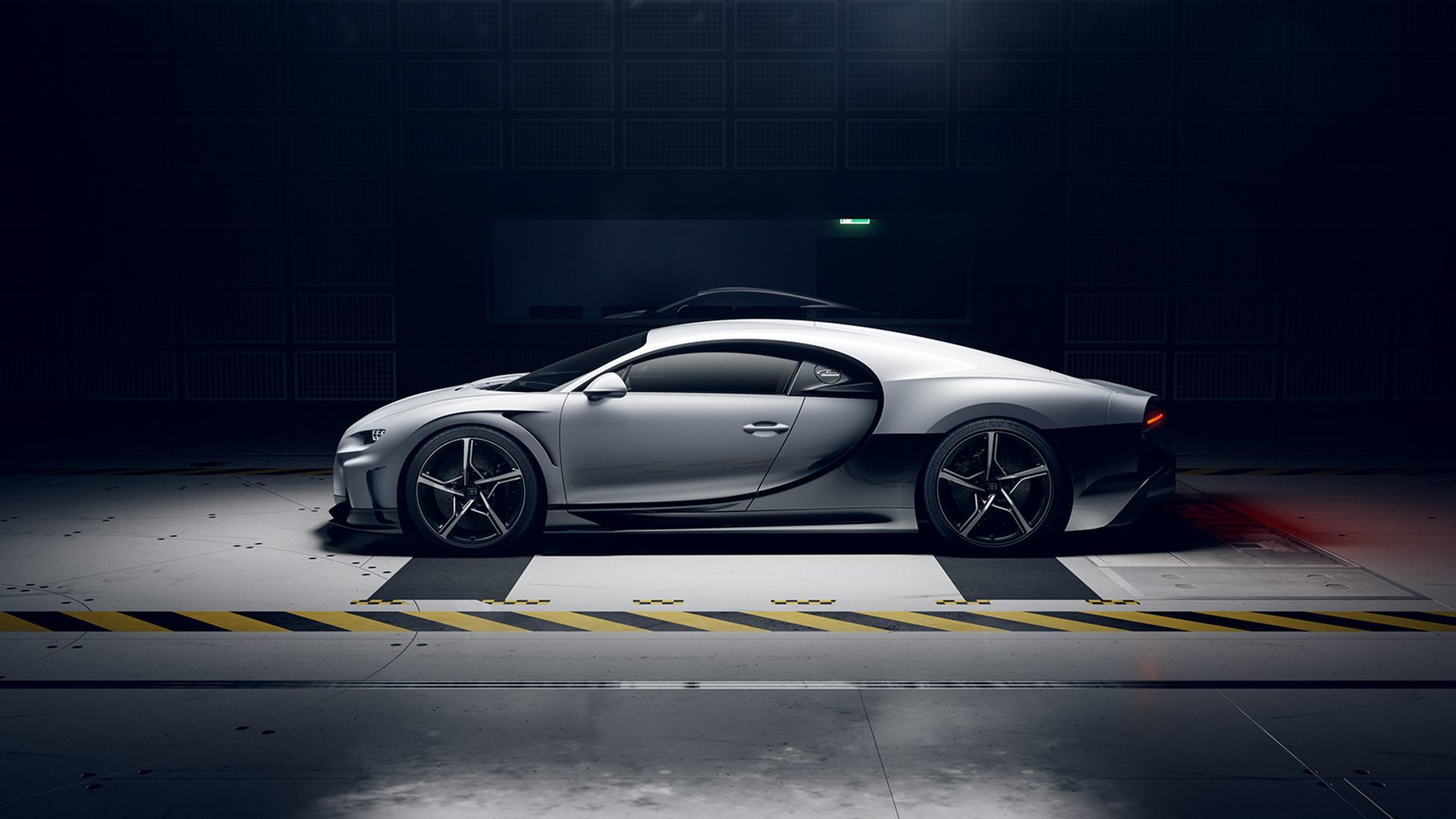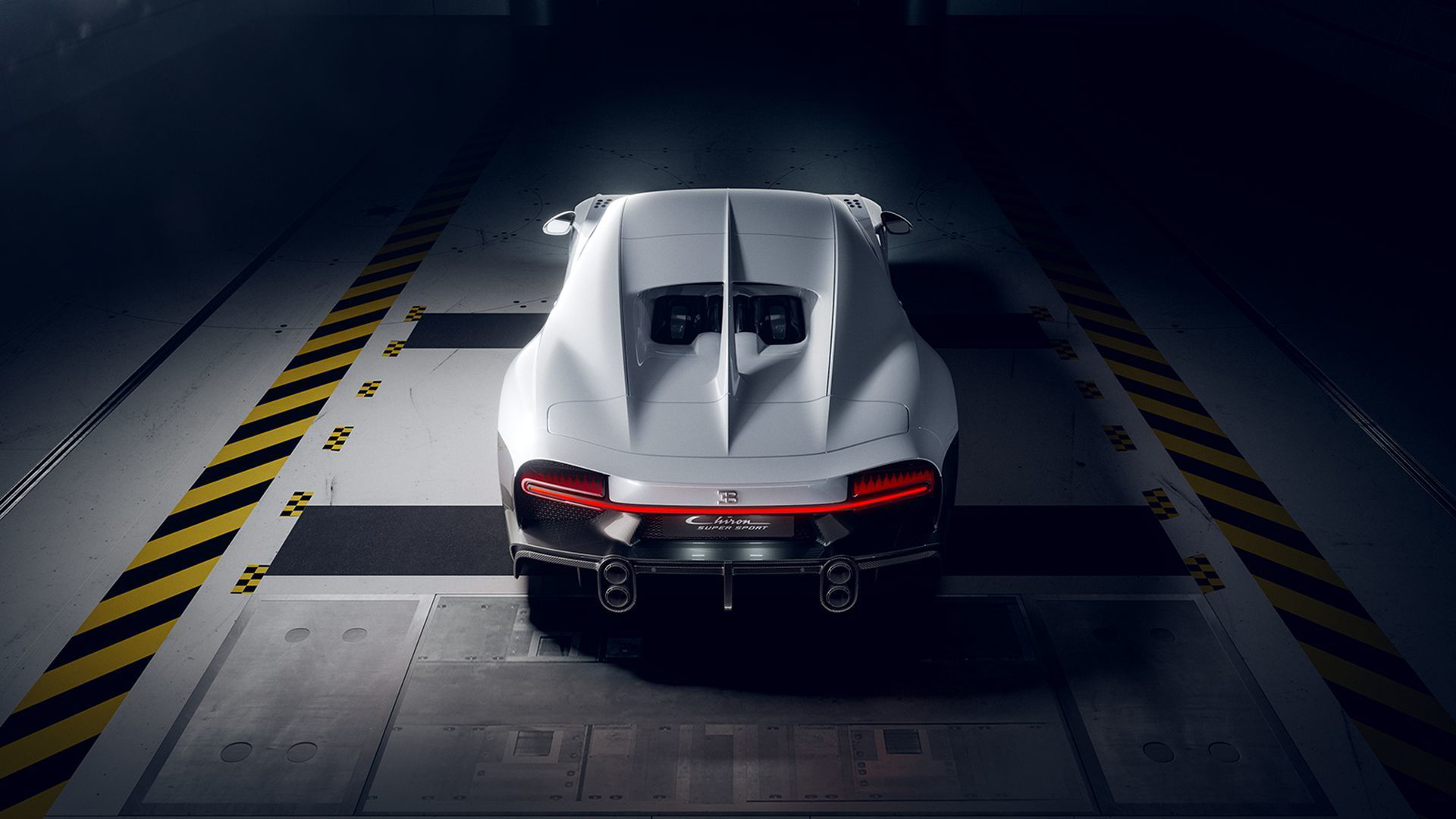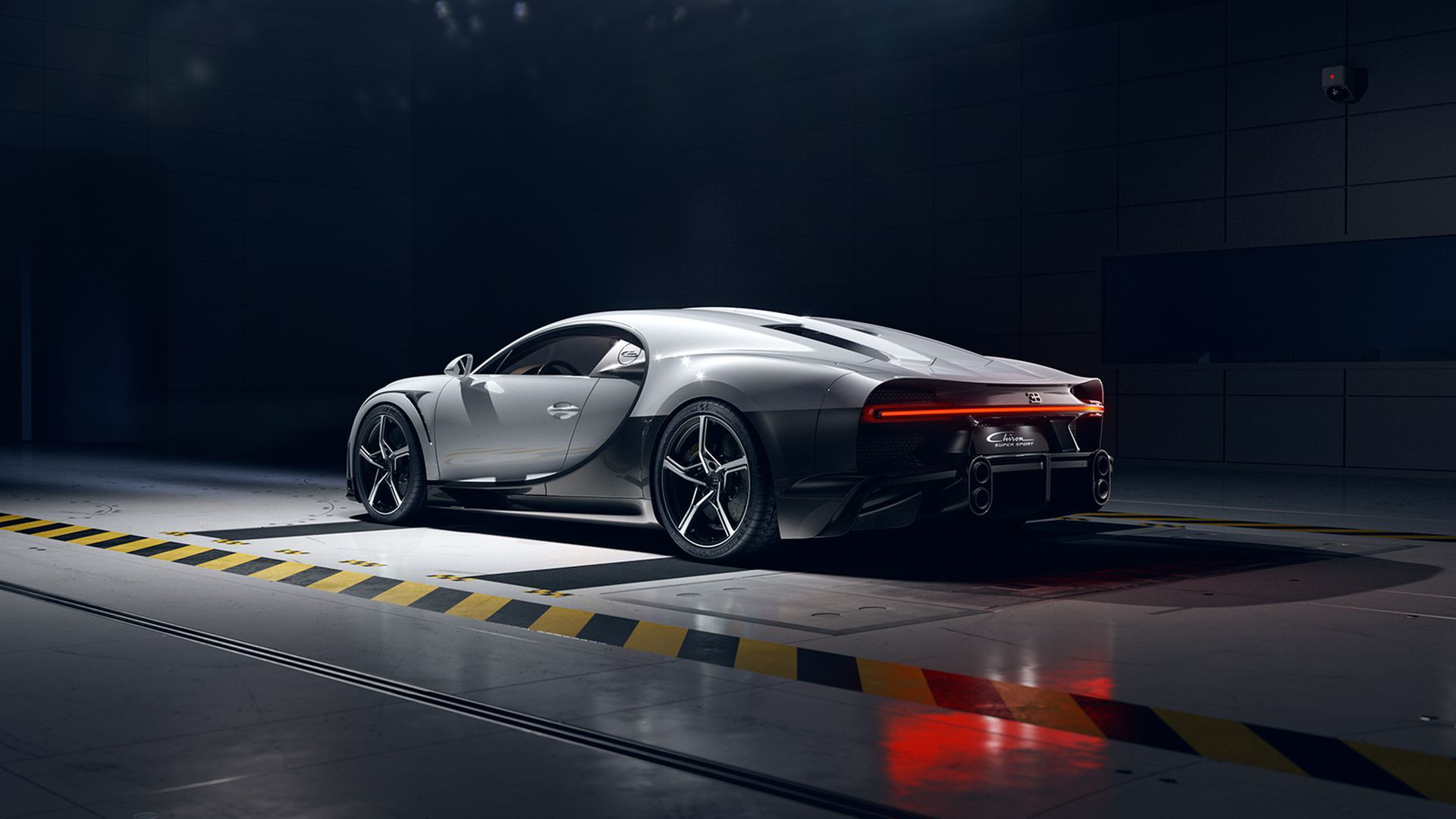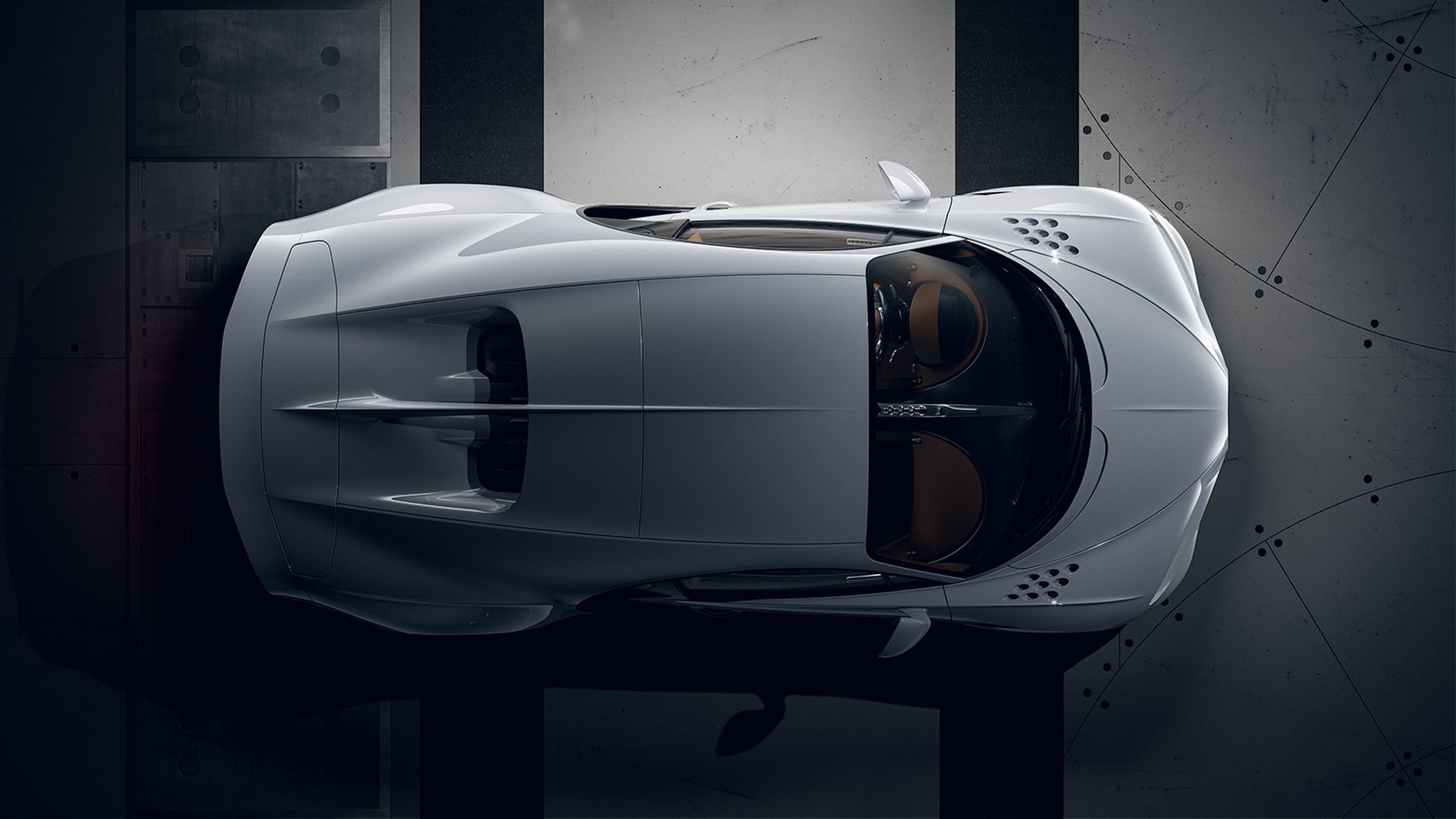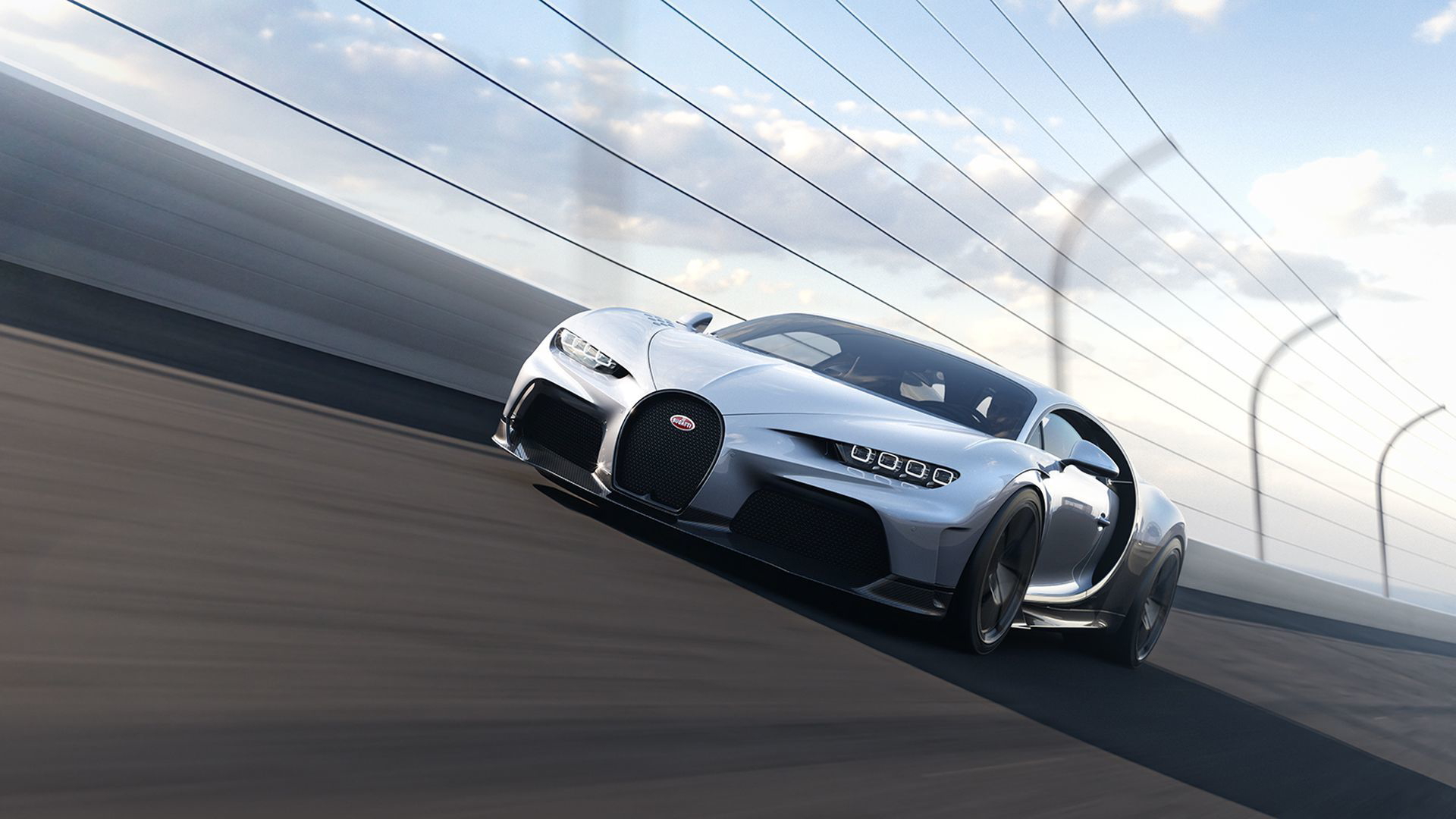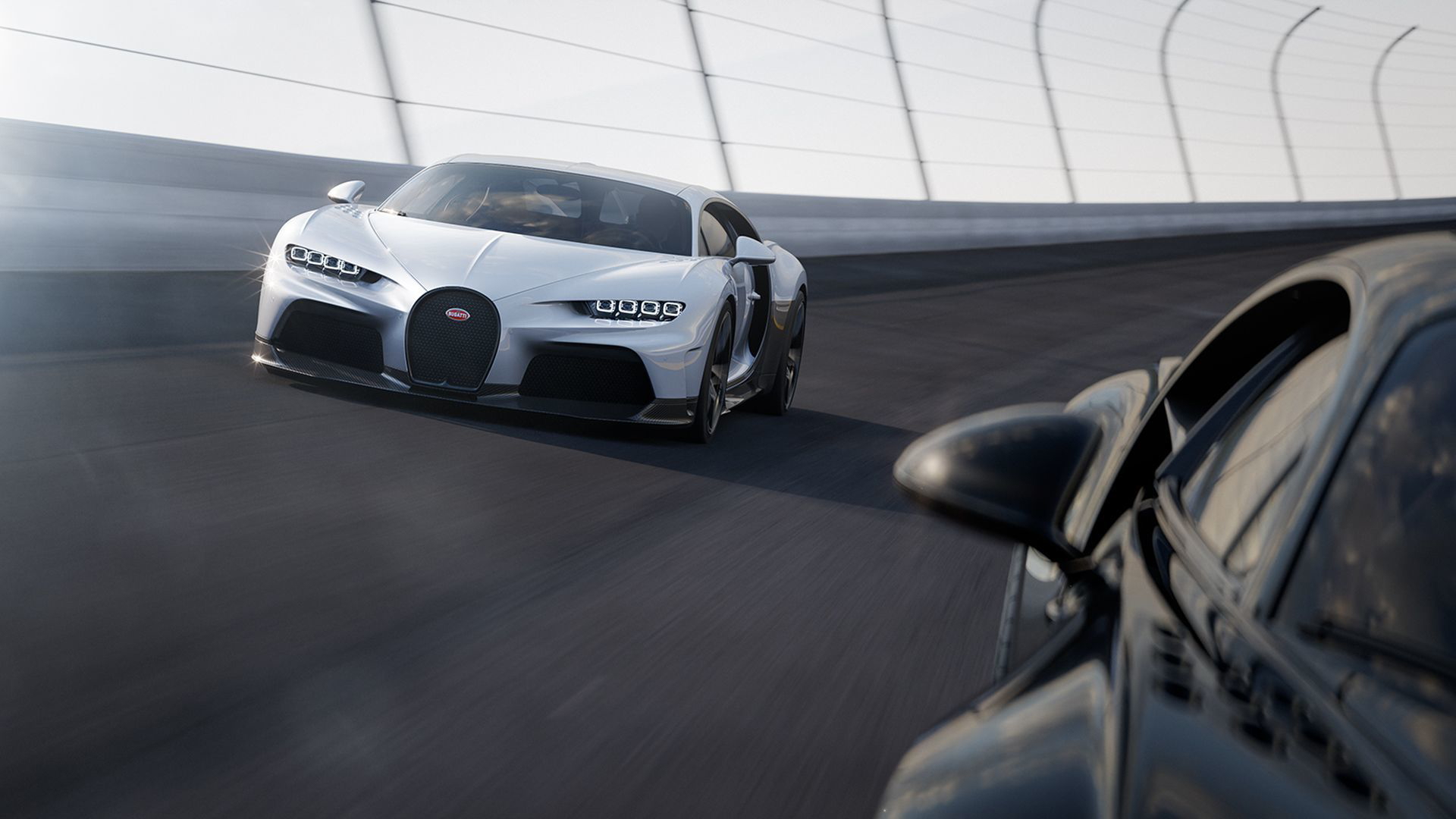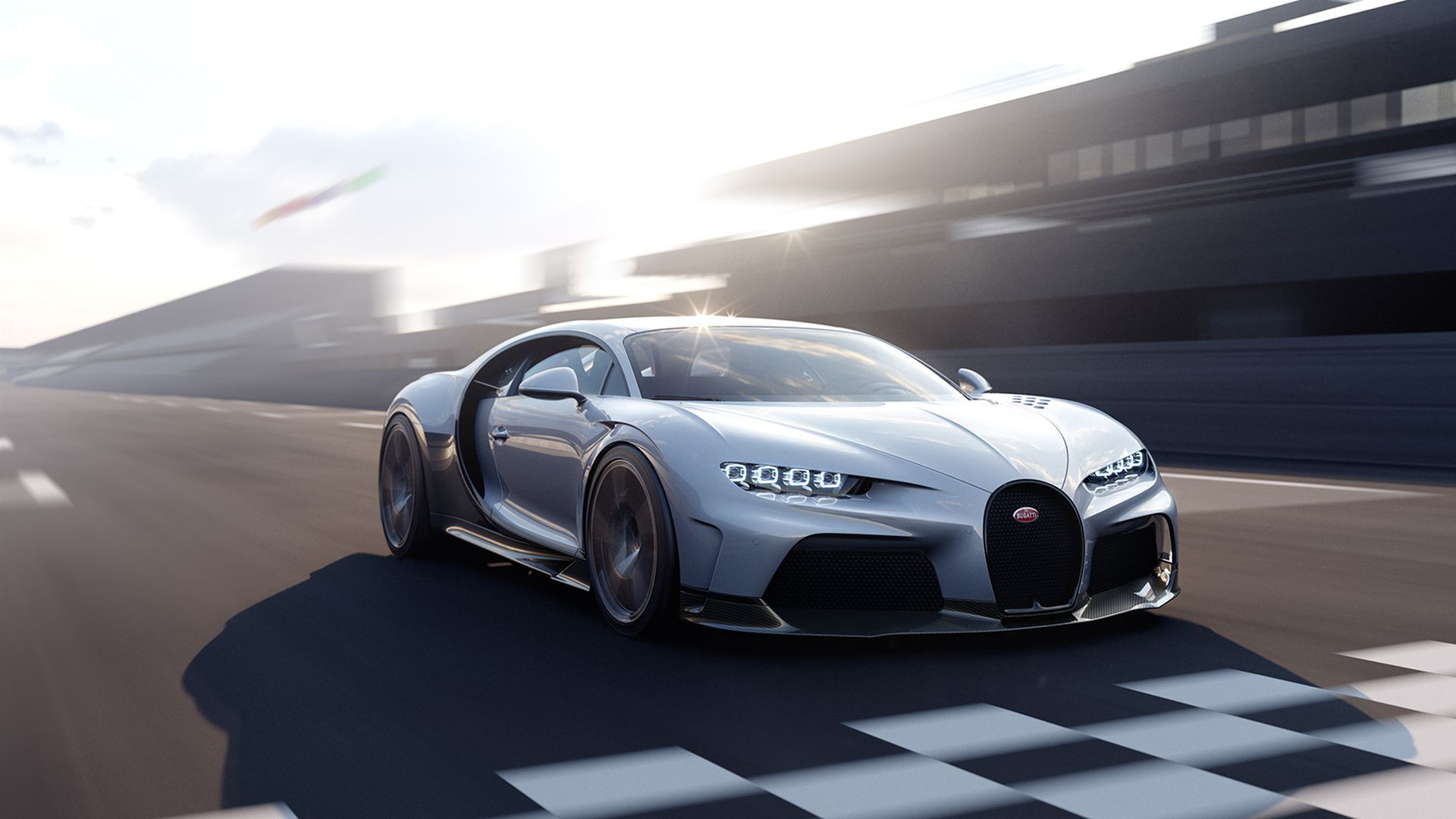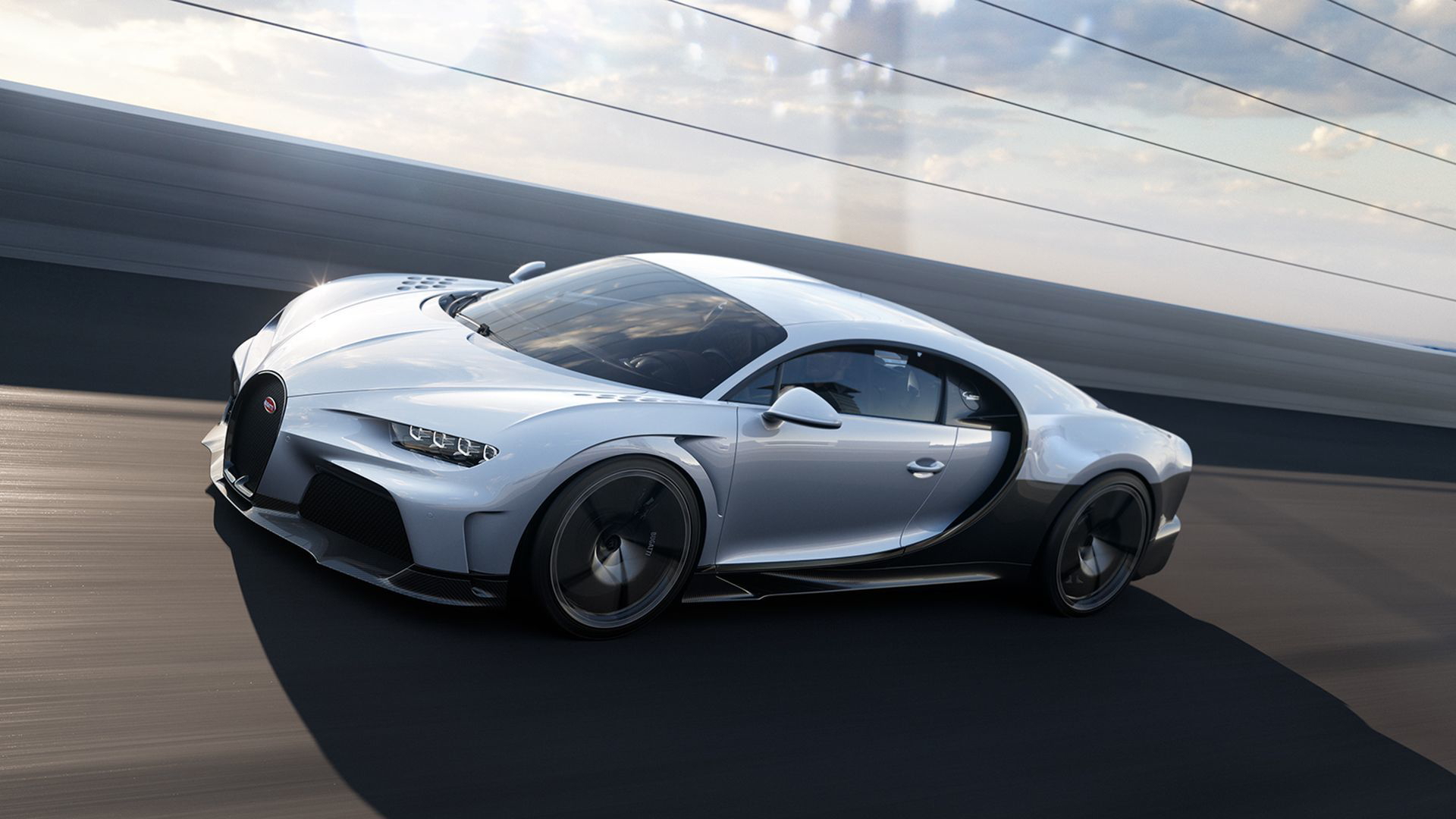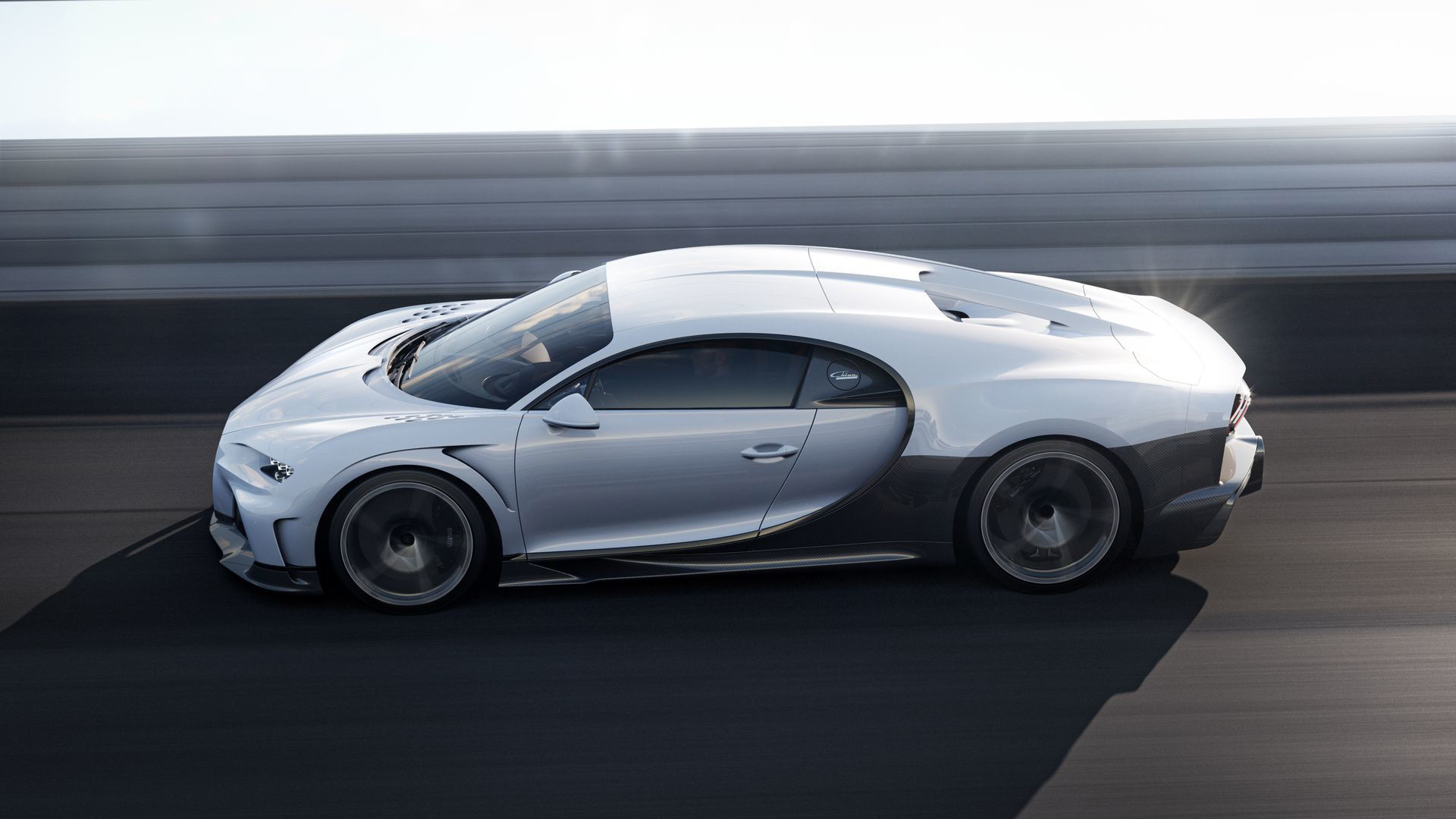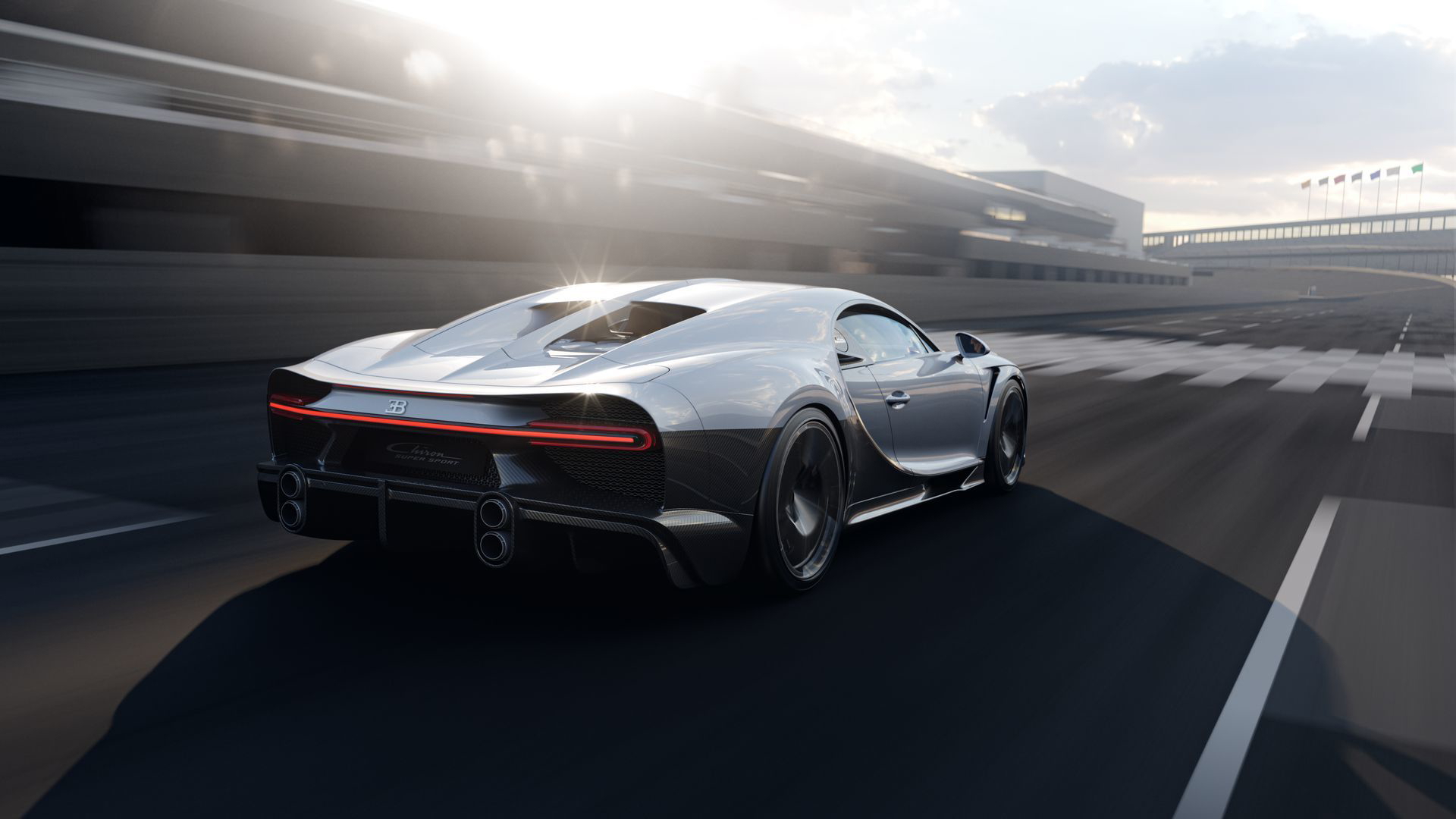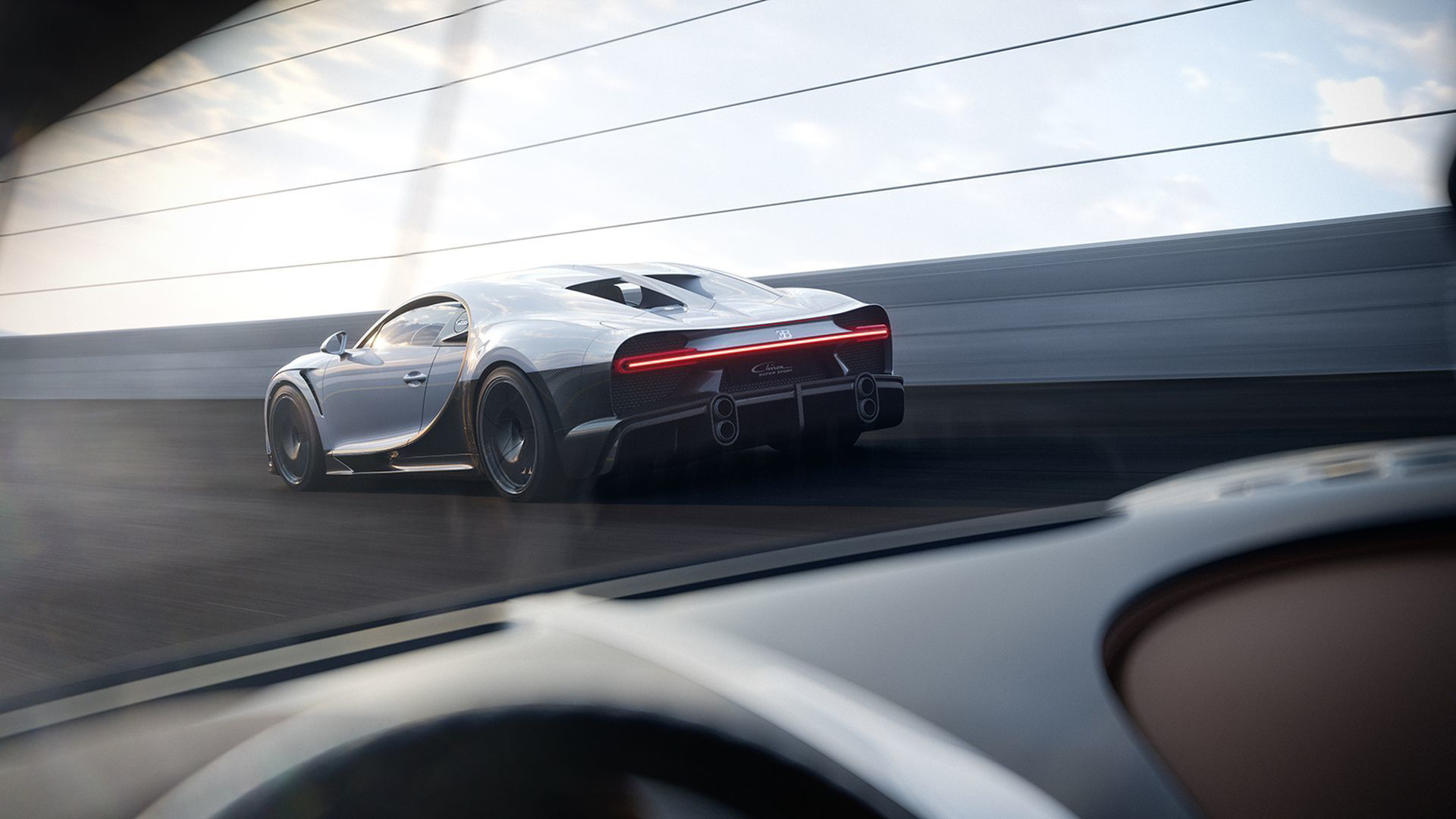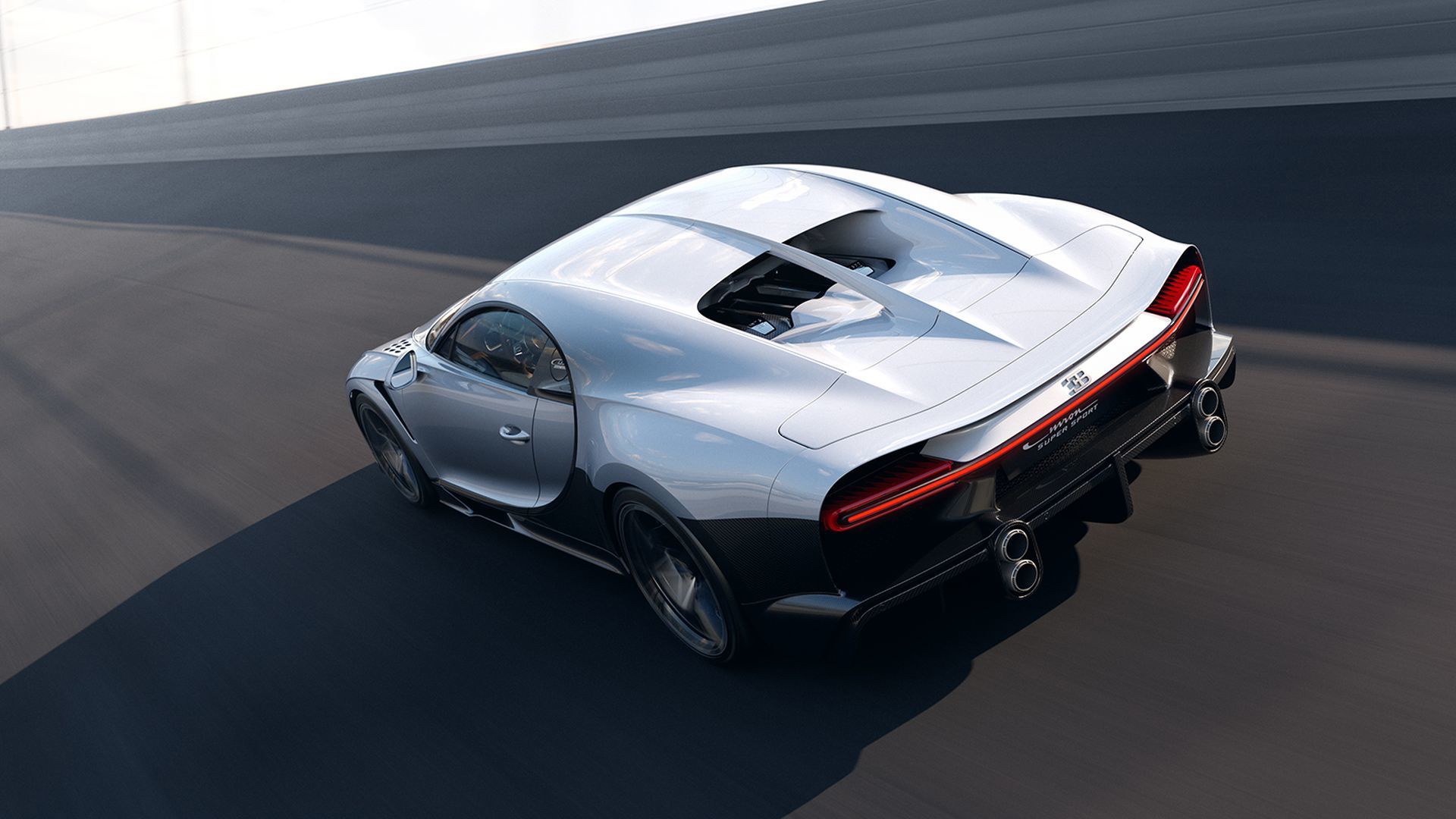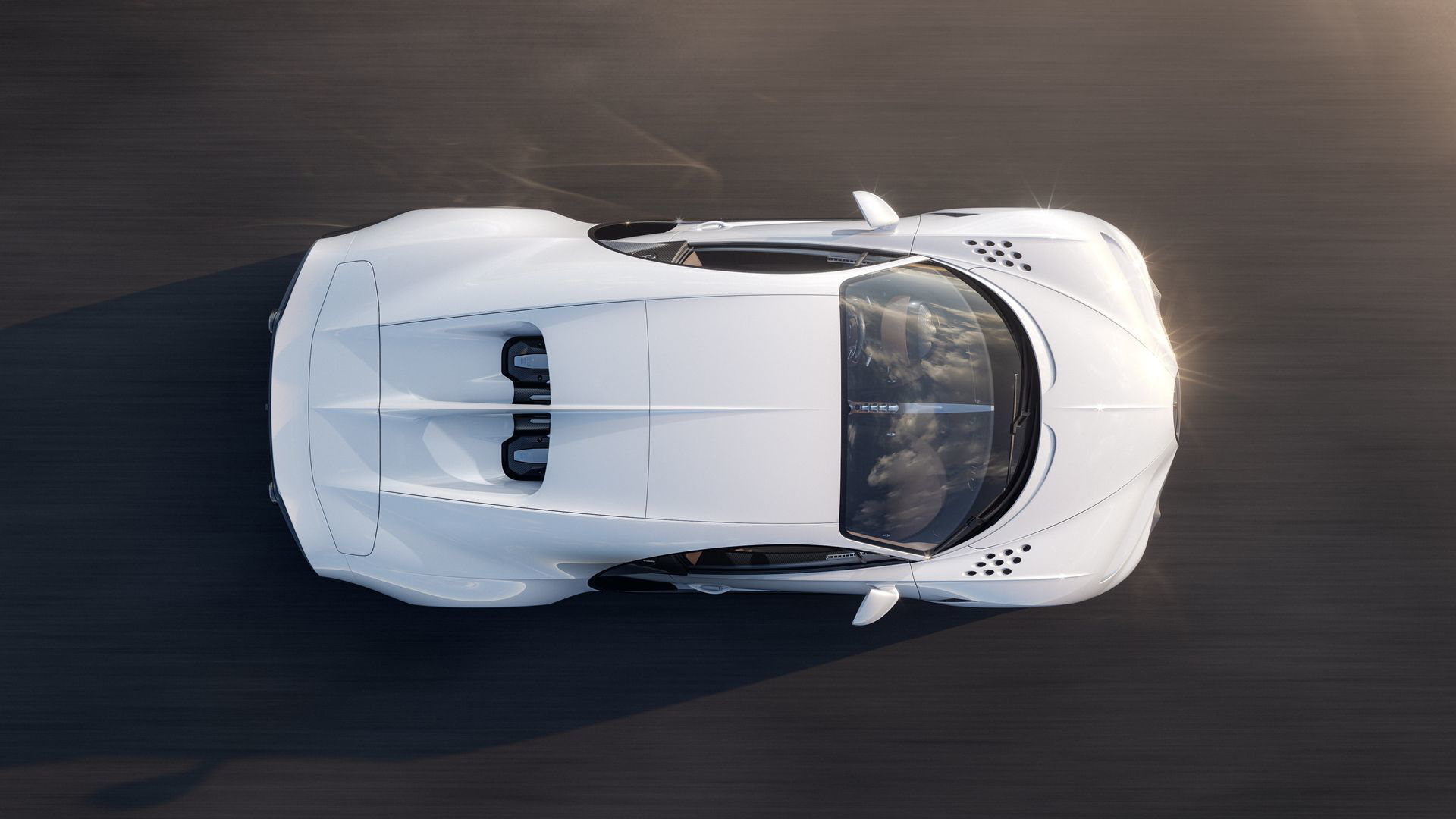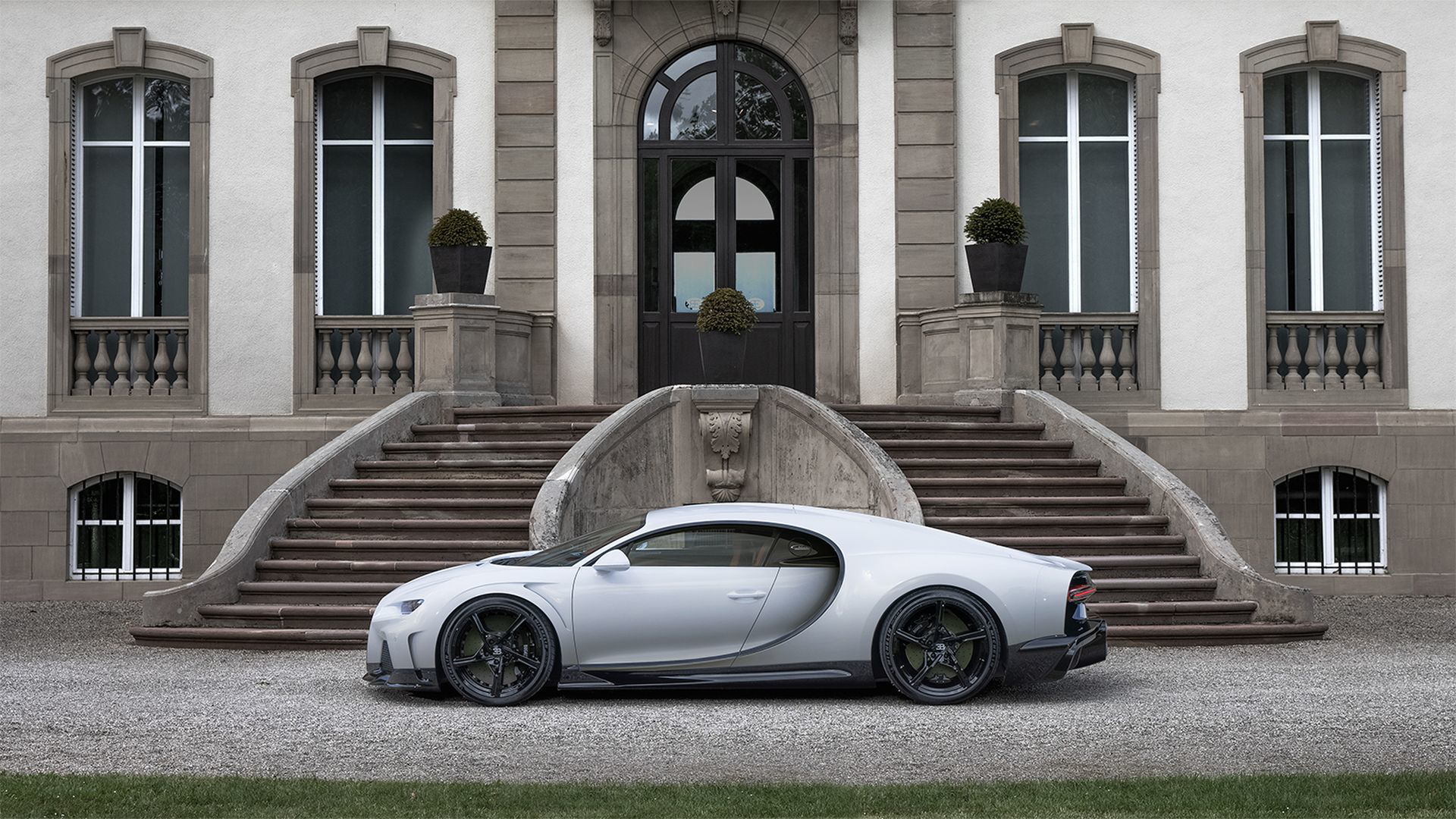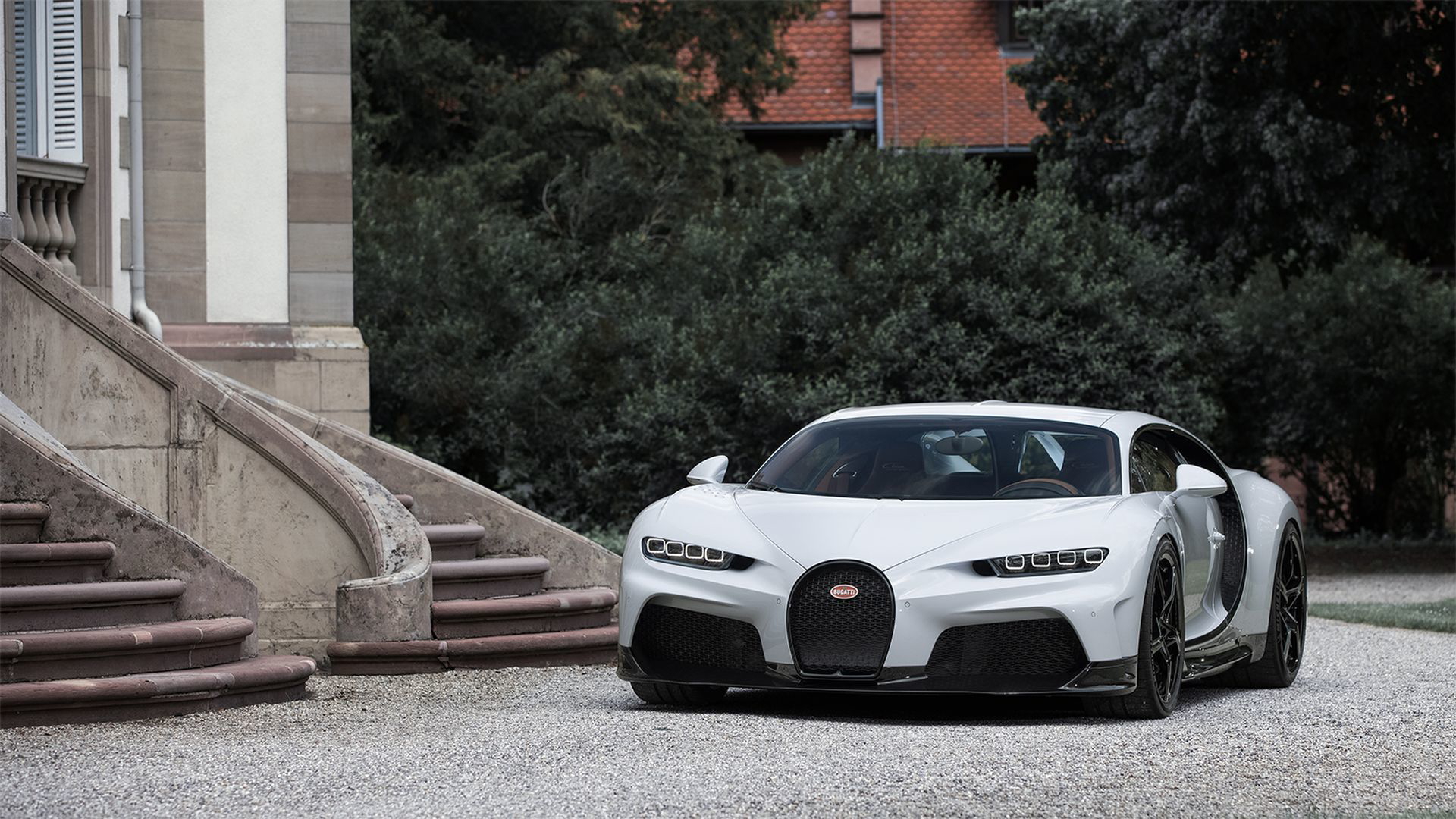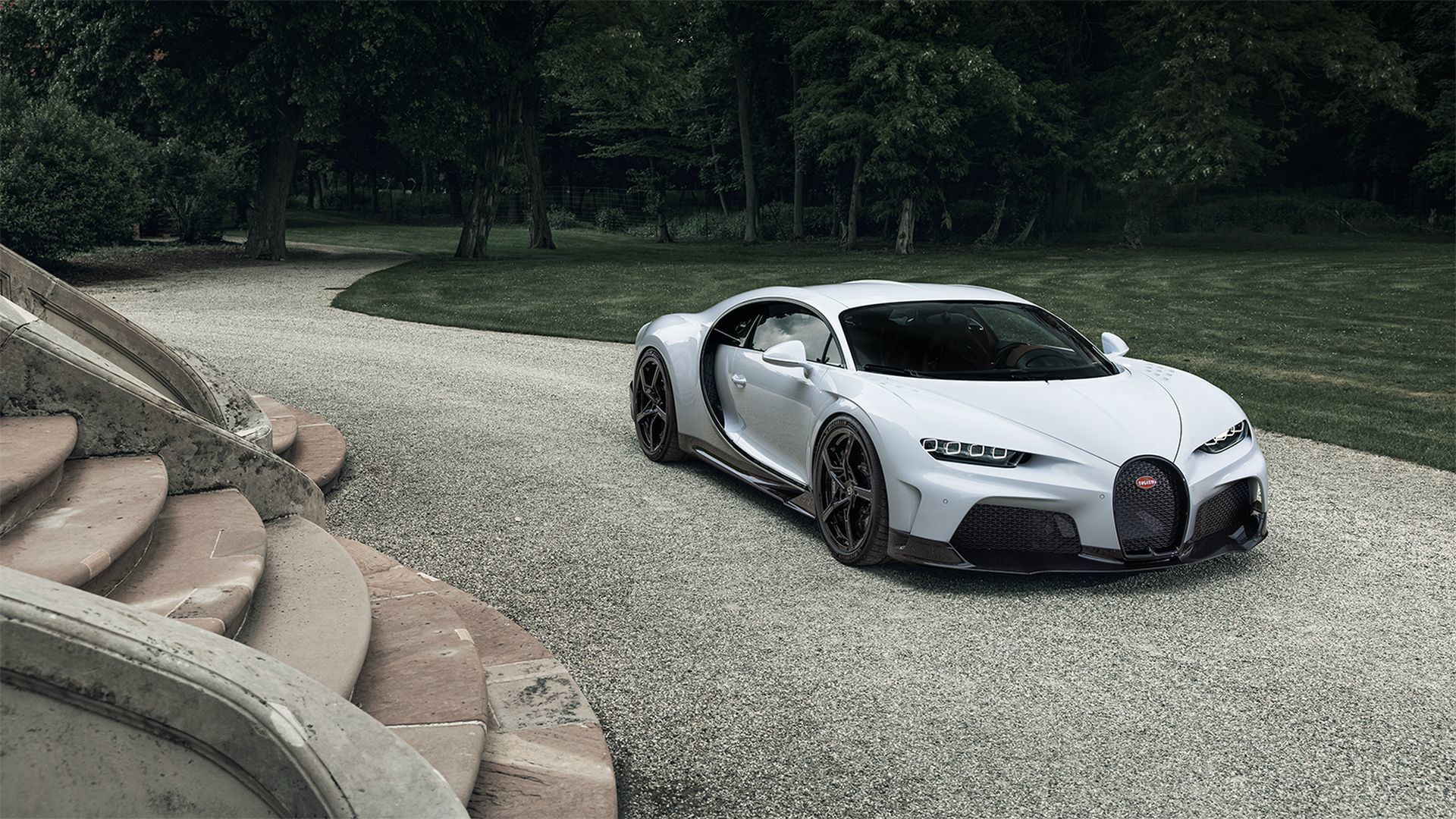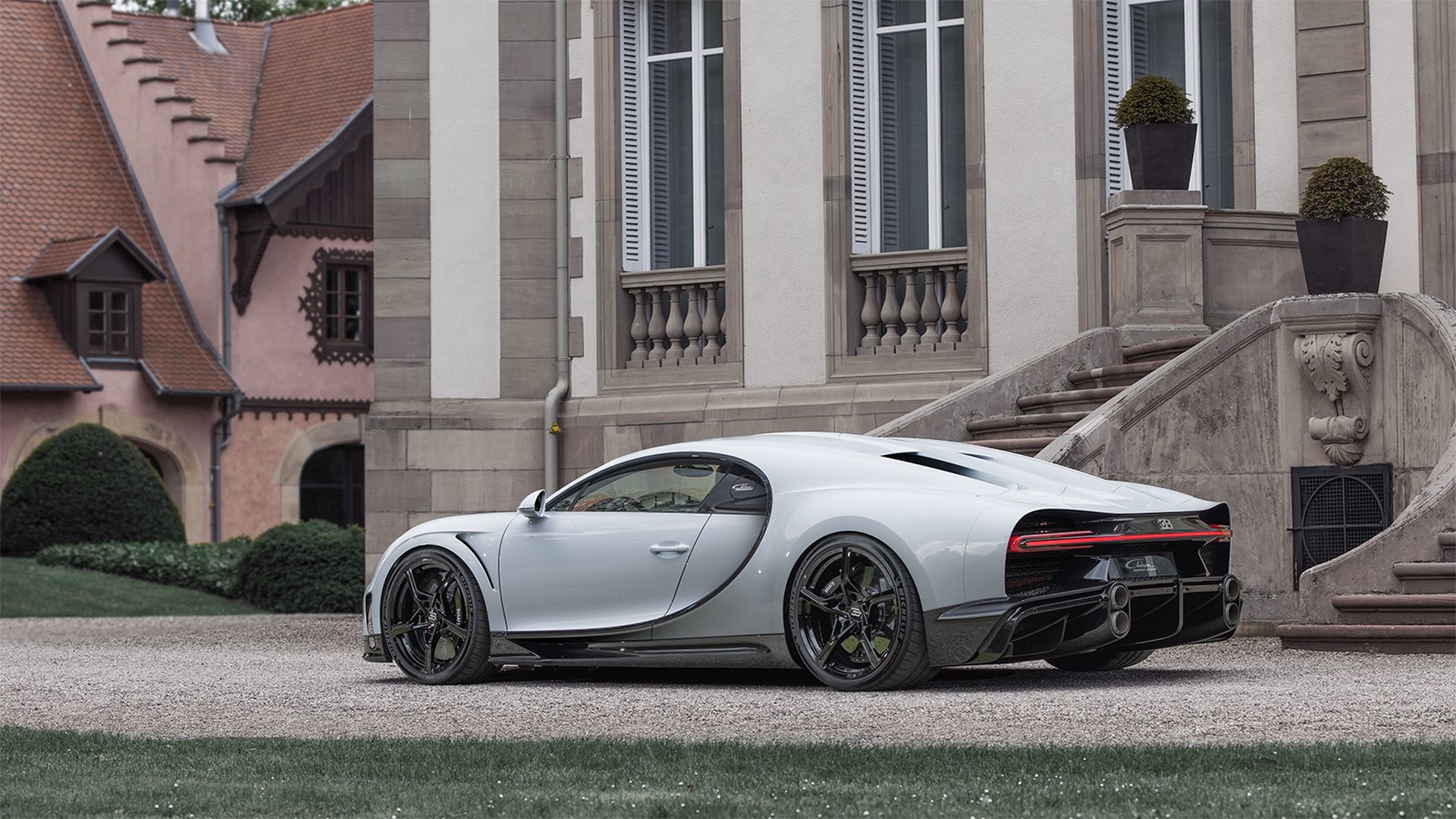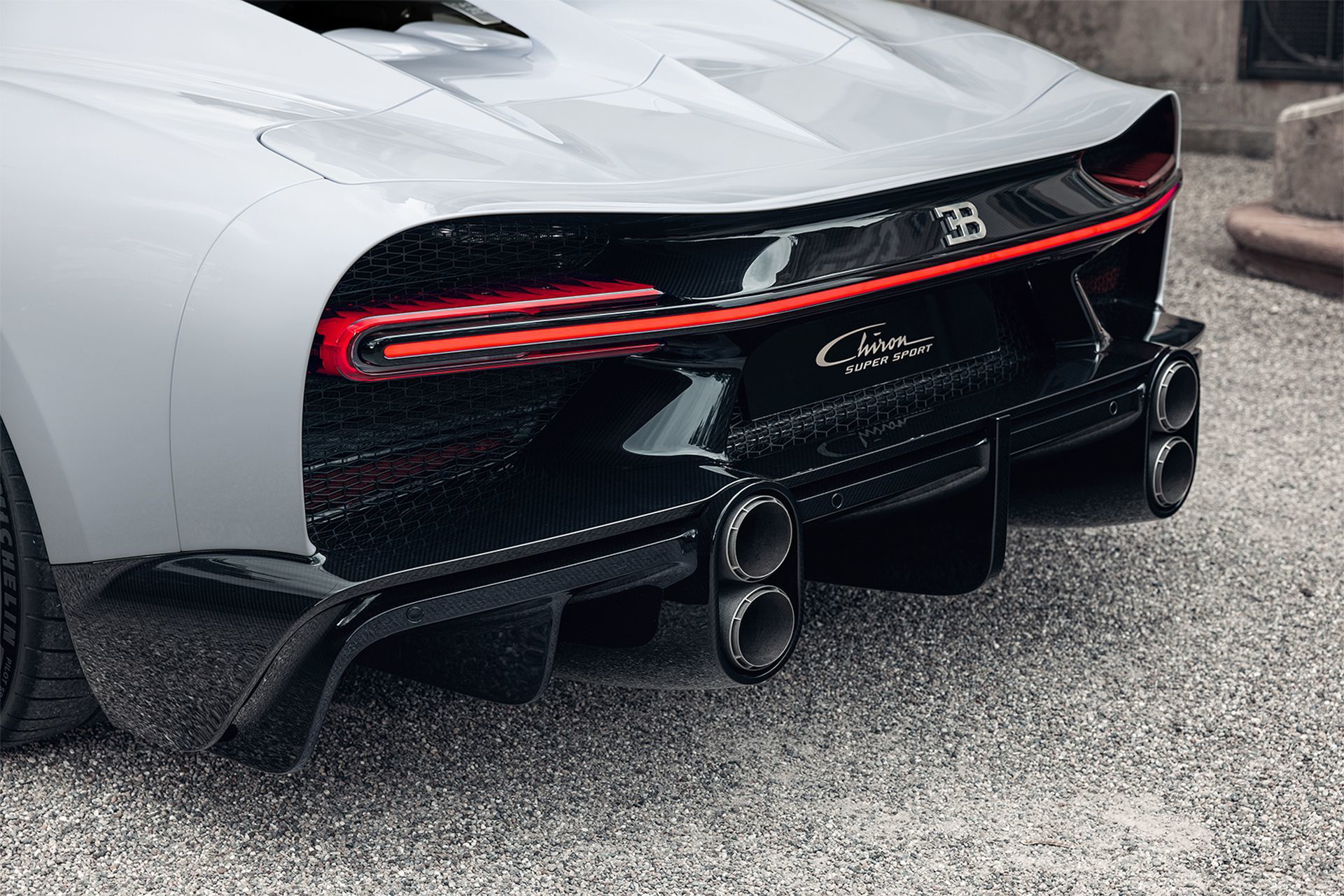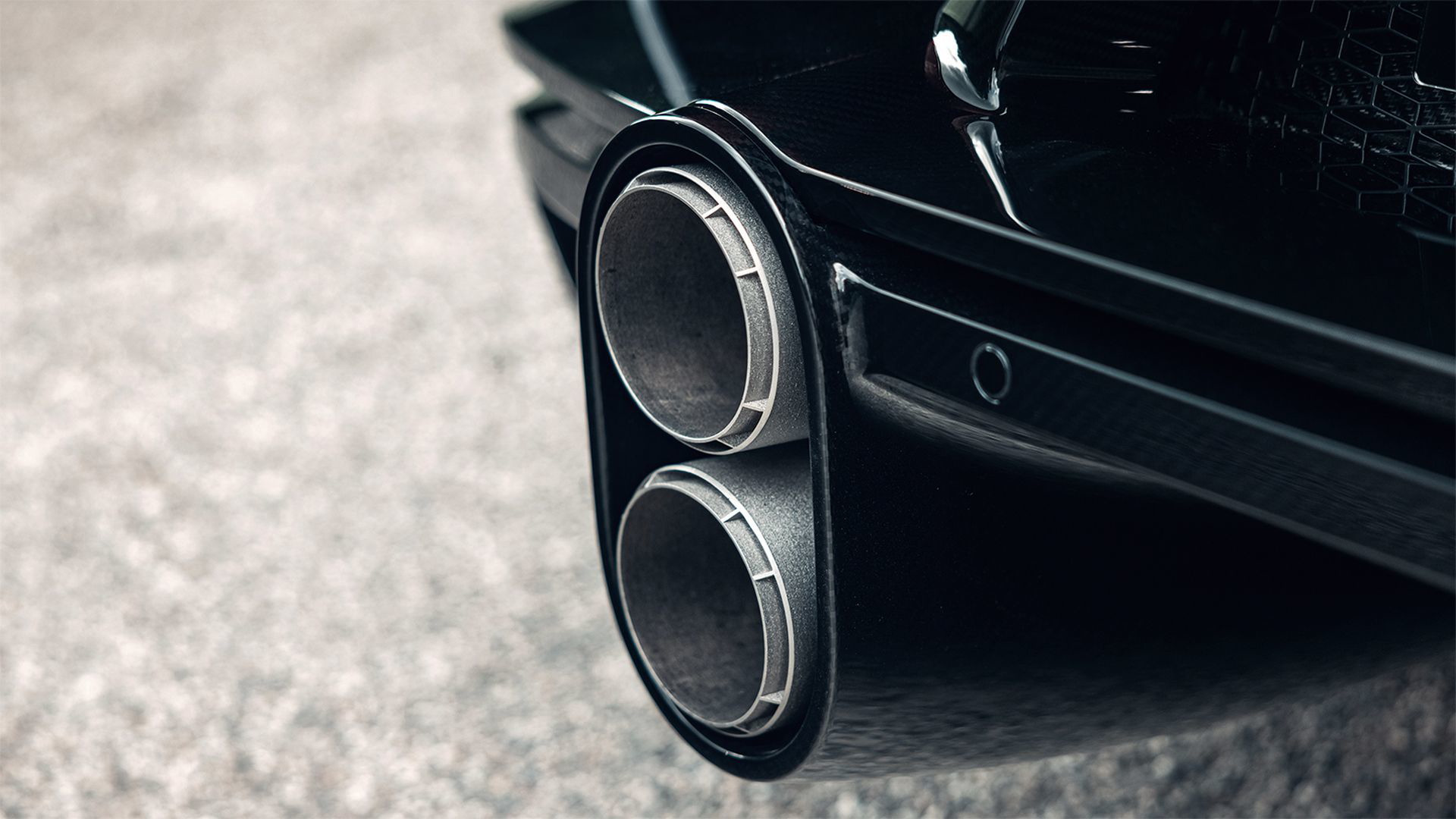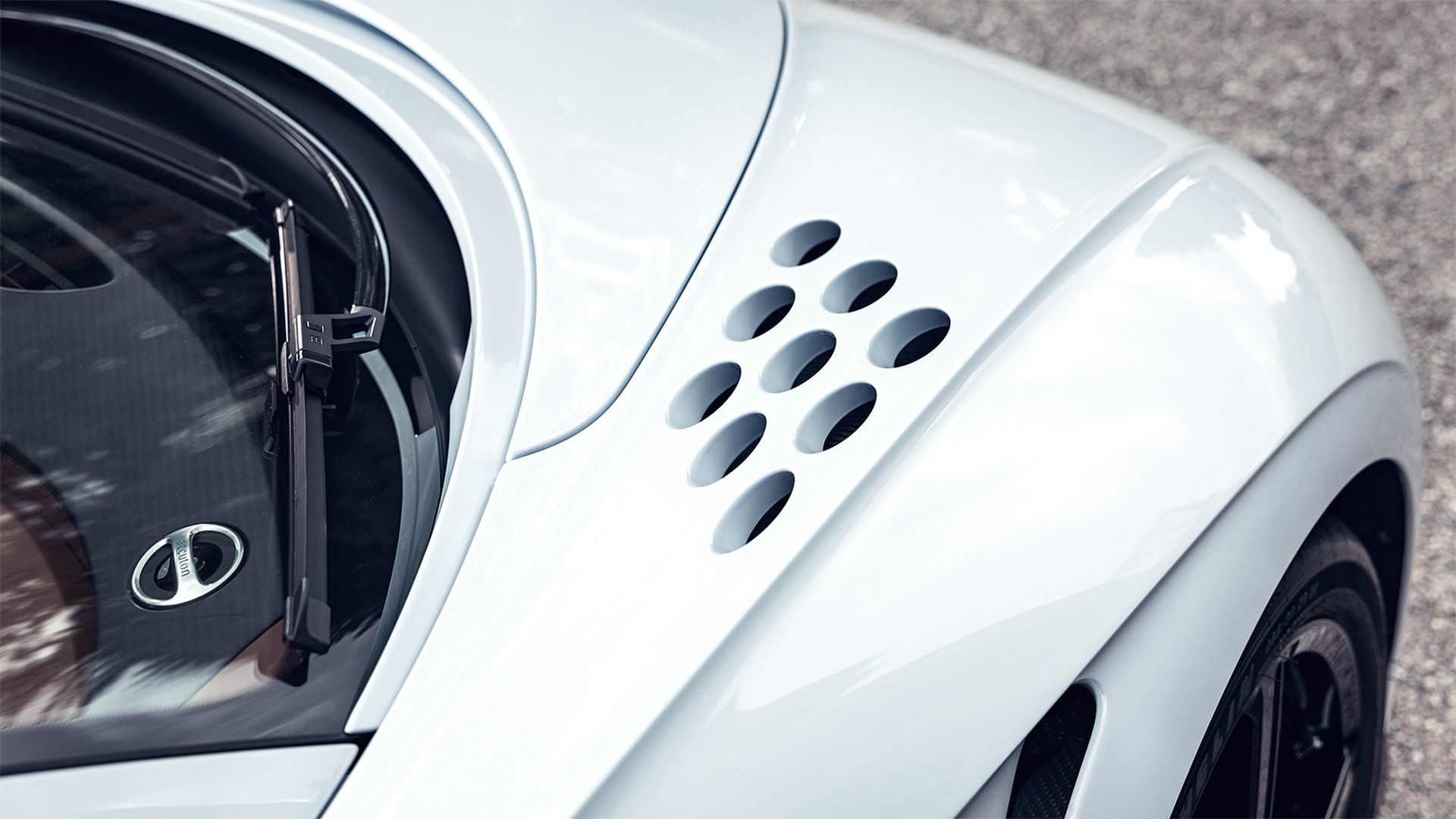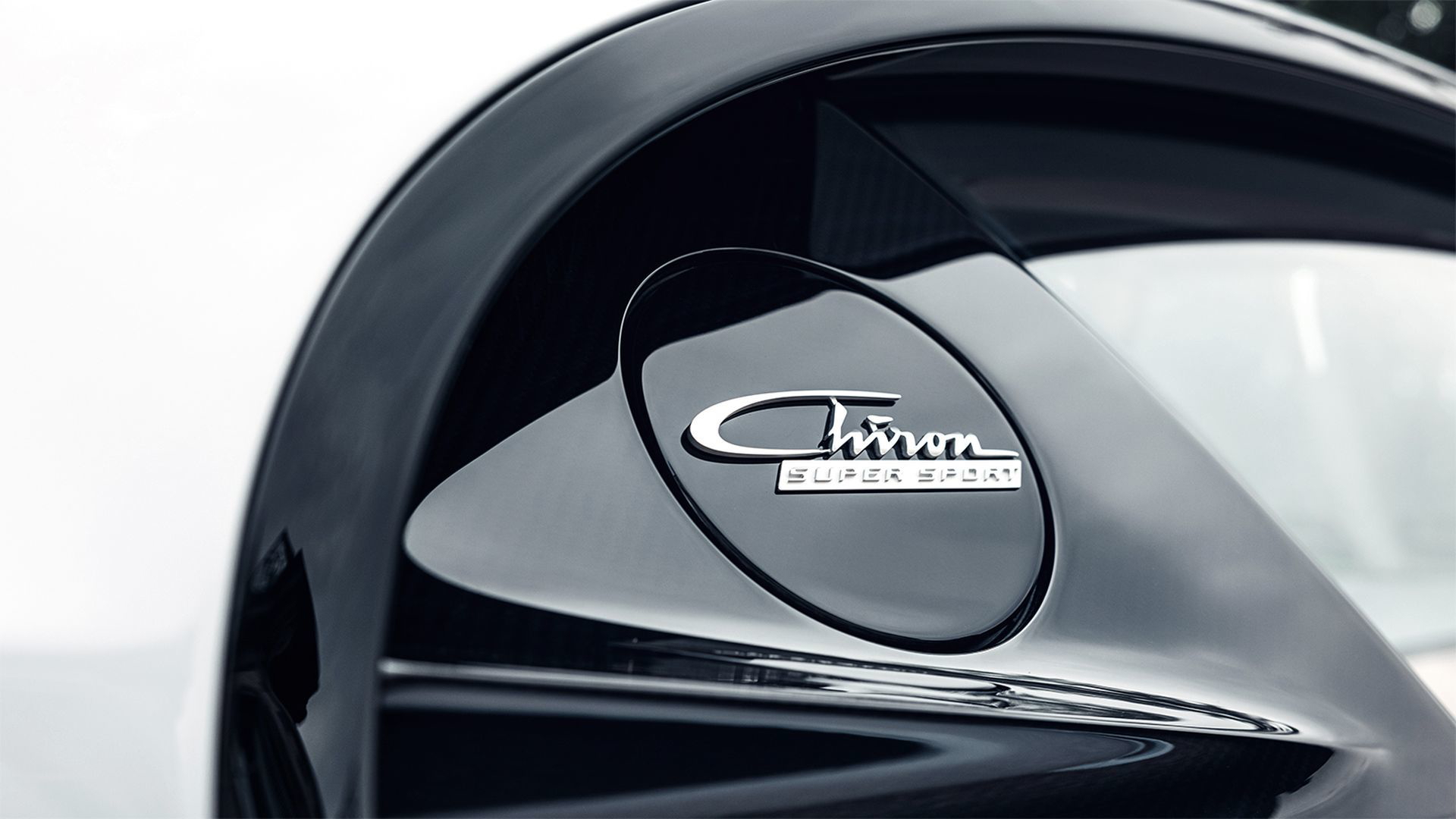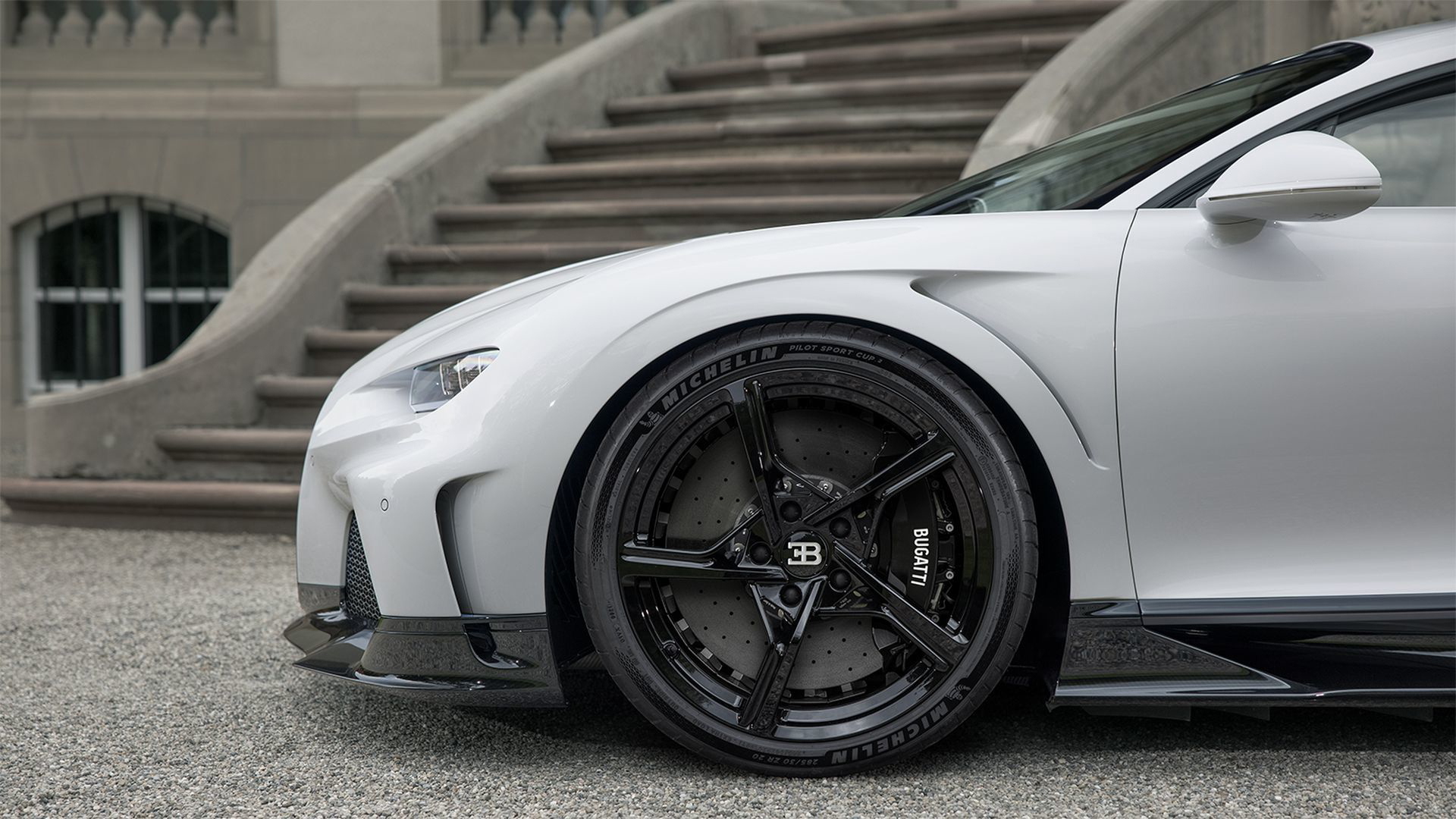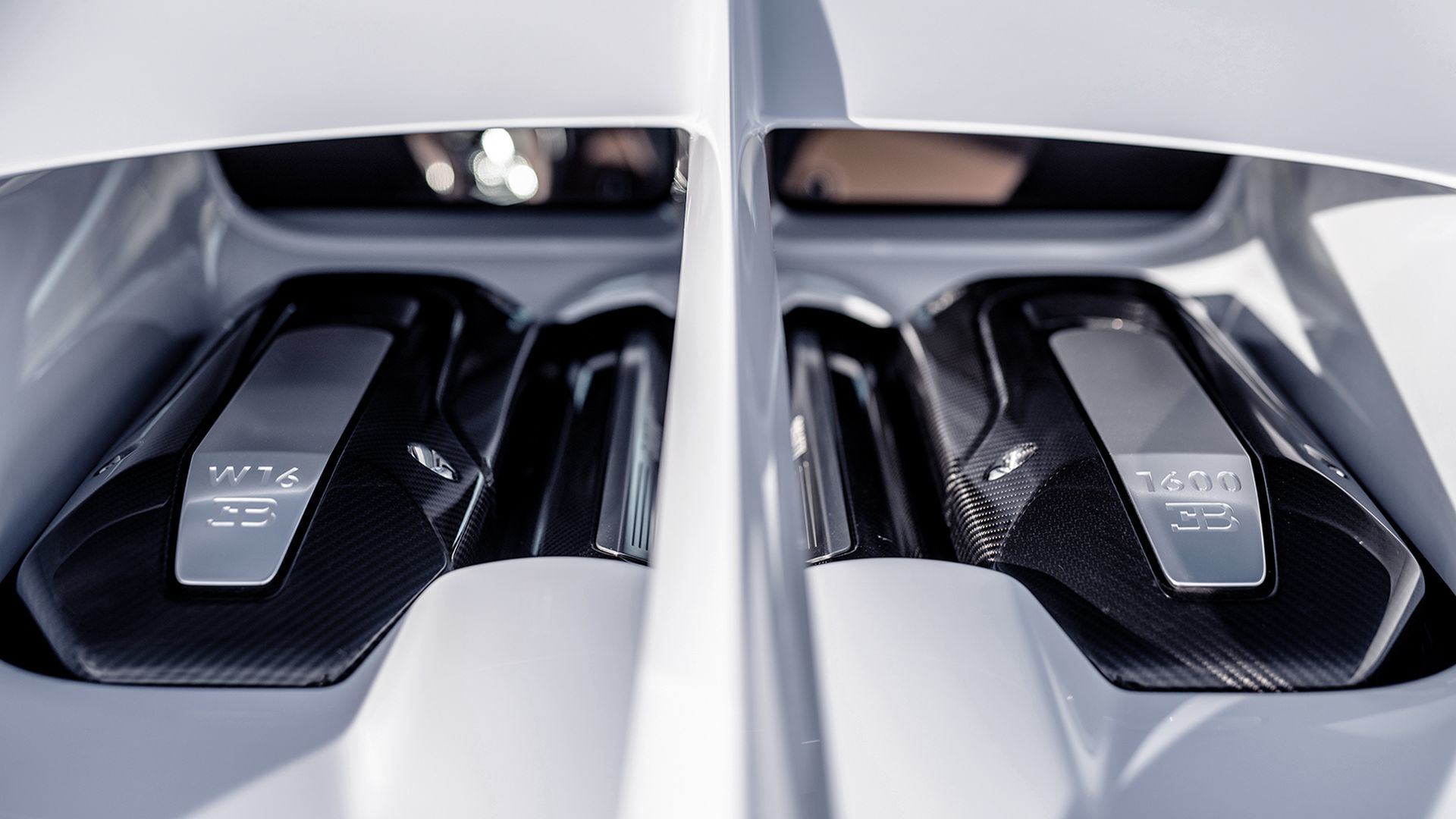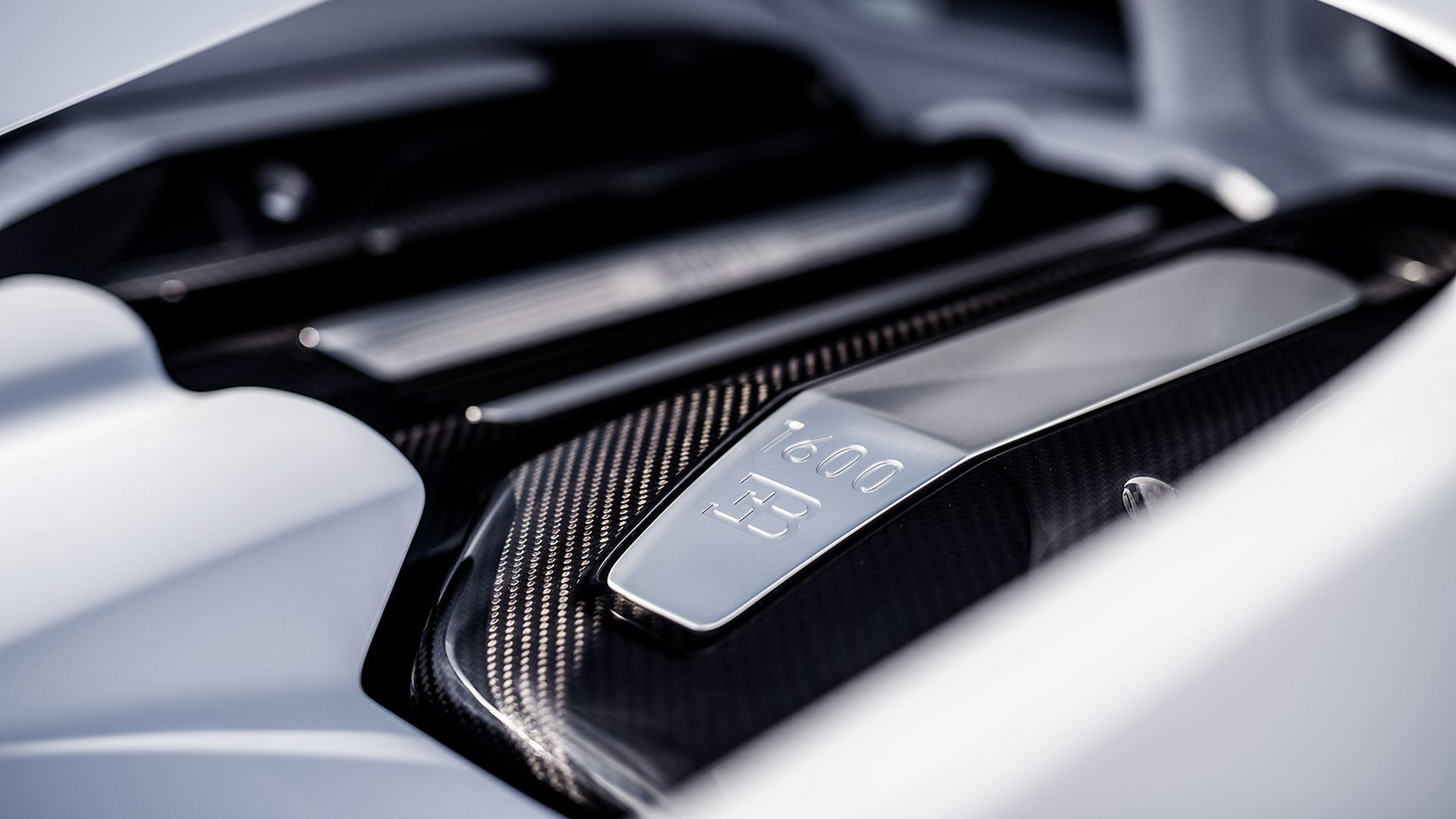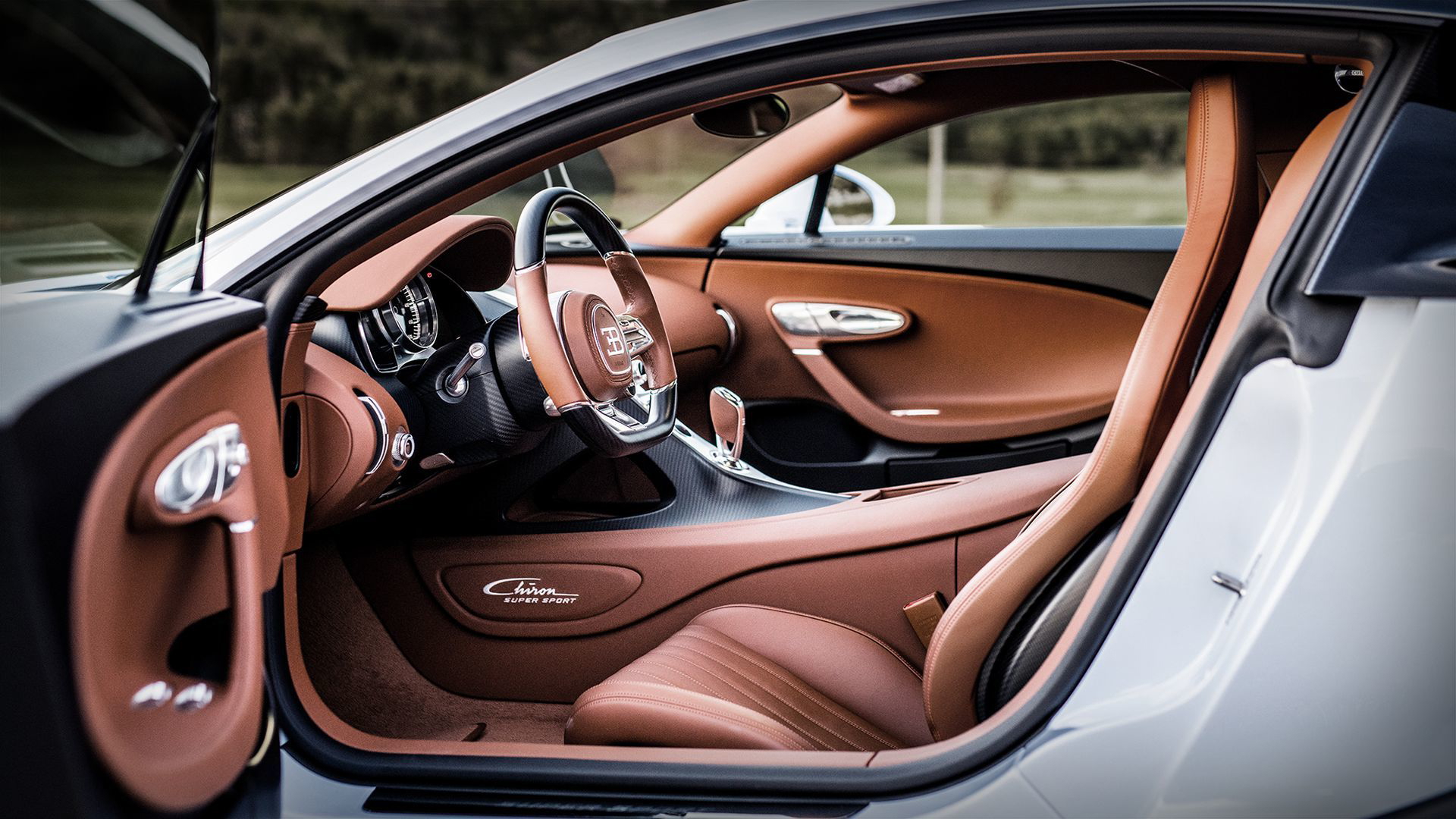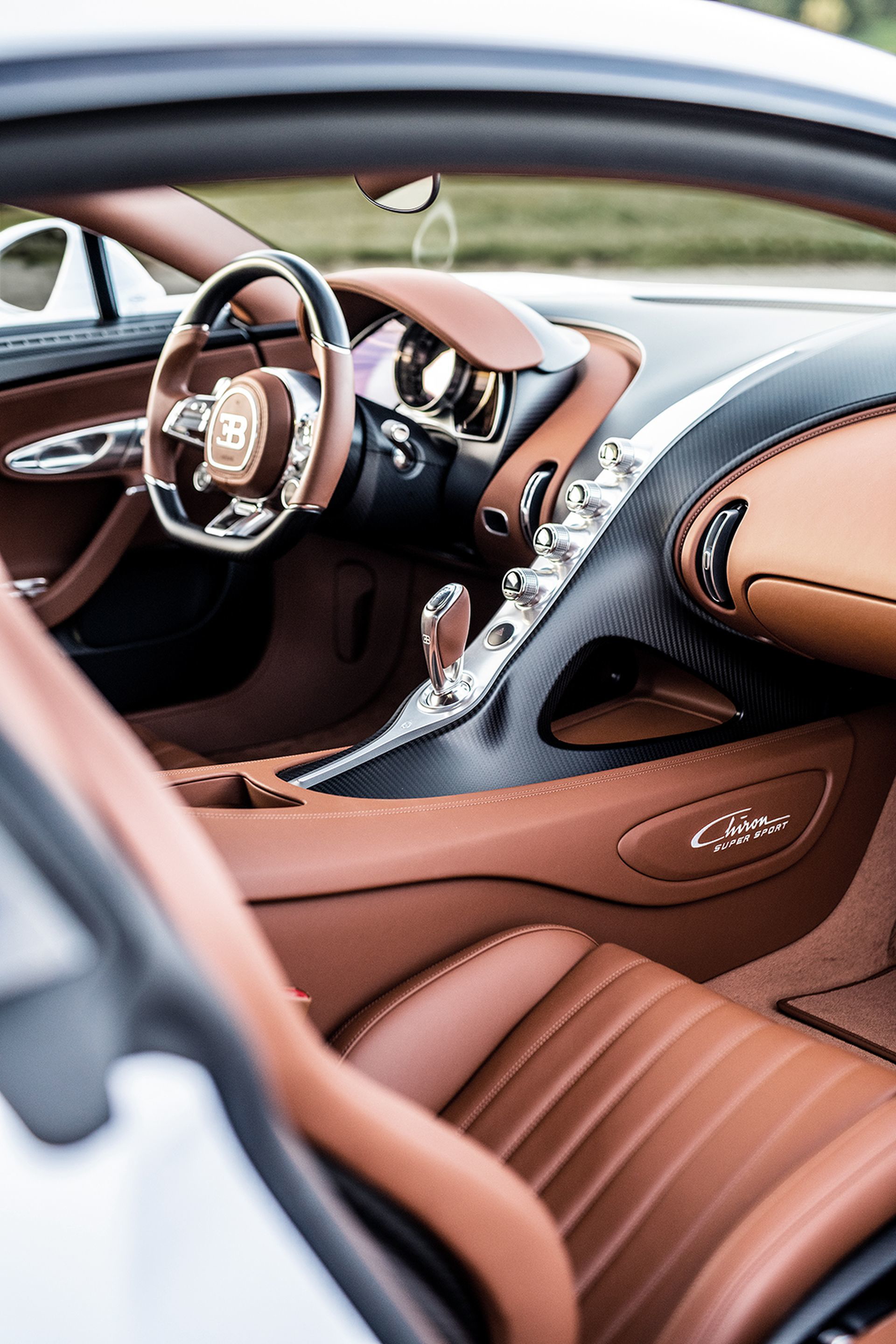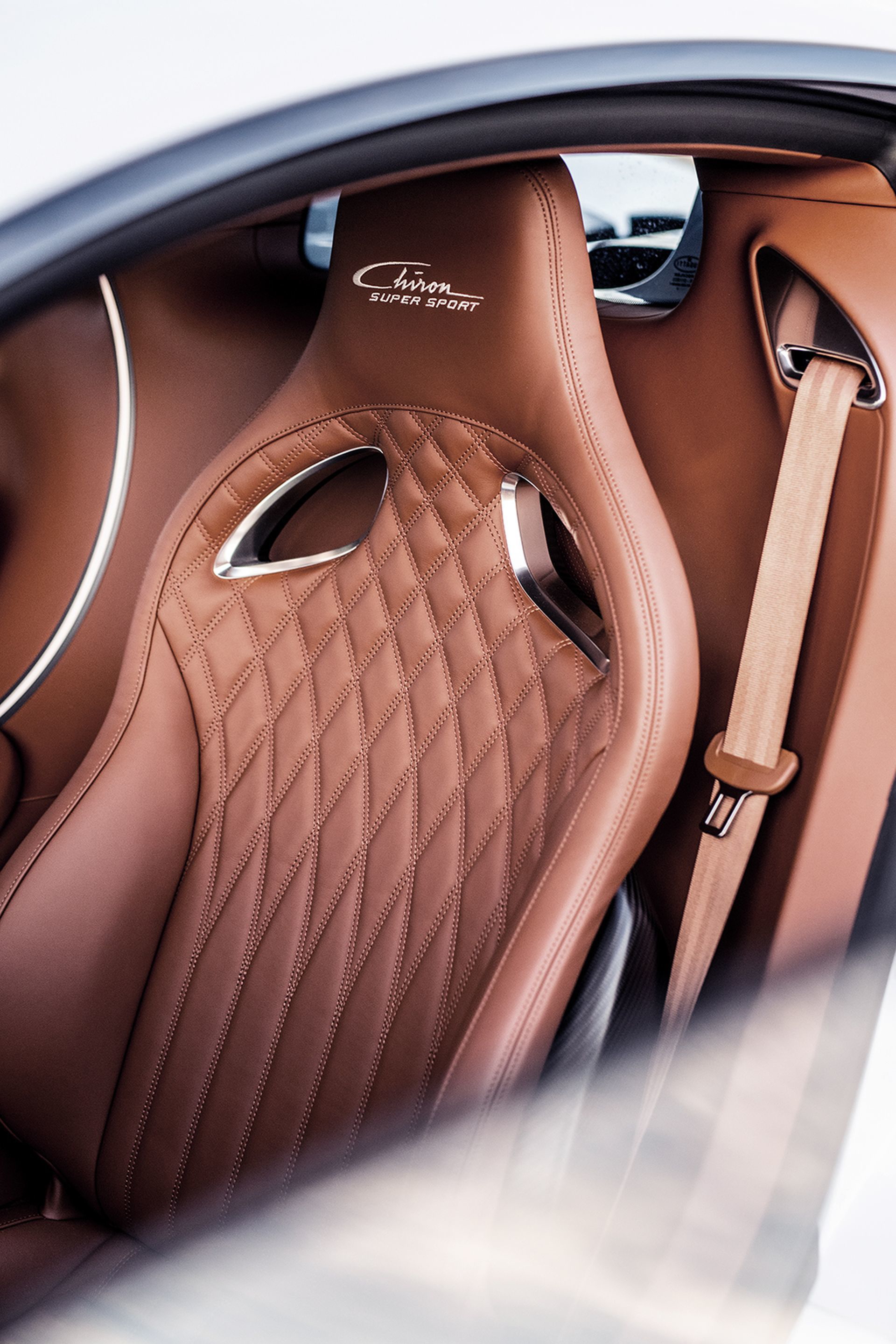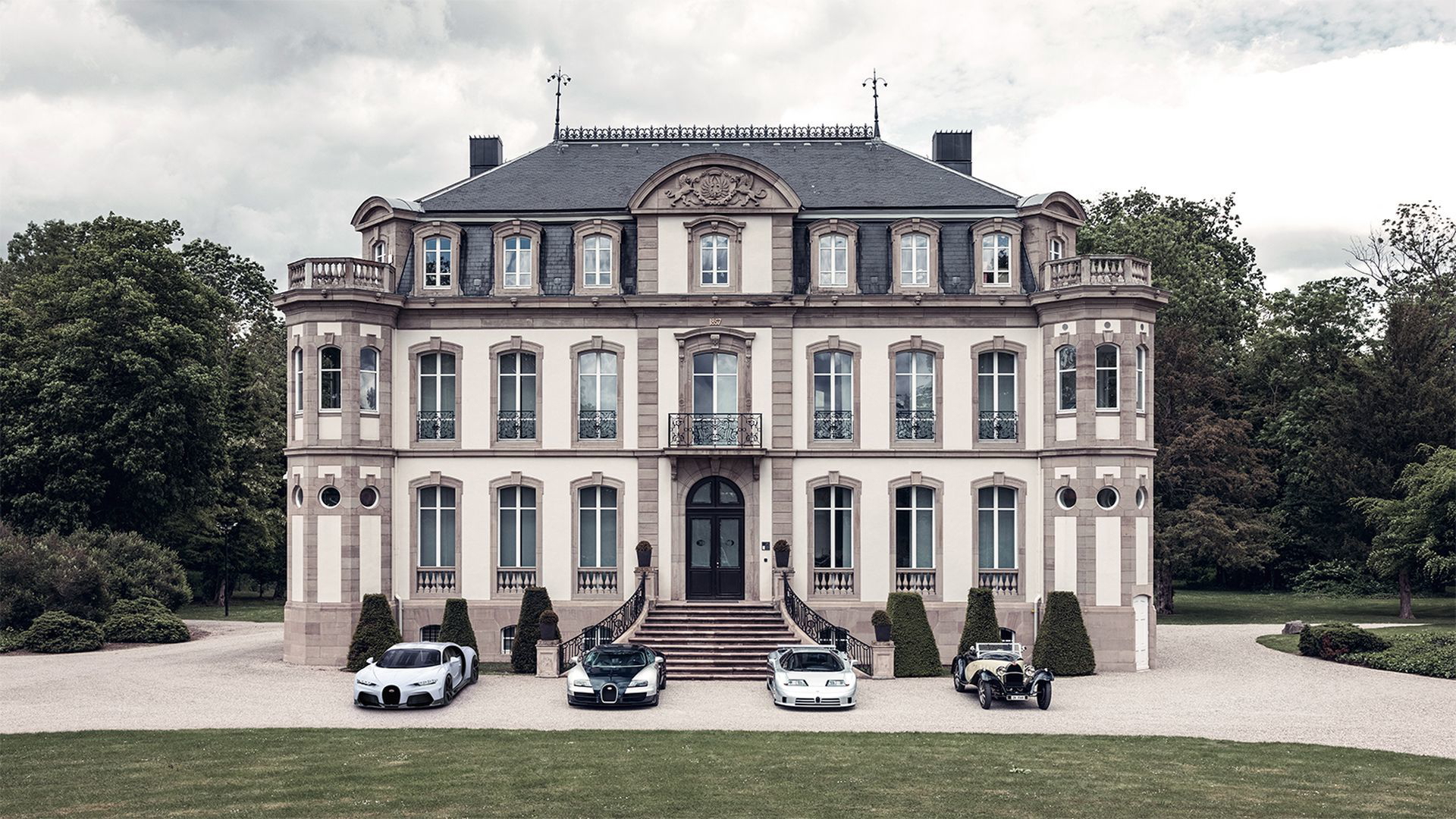2022 Bugatti Chiron Super Sport Presentation
•8 jun 2021
Bugatti desarrolló un nuevo diseño de vehículo con aerodinámica optimizada para la carrocería aerodinámica del Chiron Super Sport. El nuevo Chiron Super Sport es una reencarnación intransigente del mantra del diseño de Bugatti, "la forma sigue al rendimiento". Desde el divisor delantero hasta el difusor trasero, cada centímetro de su piel está diseñado para la máxima velocidad.
A velocidades superiores a 420 km / h, un vehículo debe ofrecer suficiente carga aerodinámica junto con una resistencia mínima. "Nuestro objetivo era darle al vehículo una configuración neutral a su velocidad máxima y al mismo tiempo darle una forma lo más aerodinámica posible". Frank Heyl, subdirector de diseño explica en Bugatti. Las fuerzas de elevación ejercidas sobre la carrocería a 440 km / h son inmensas. El cuerpo del Chiron Super Sport genera una carga aerodinámica masiva para contrarrestar este levantamiento y equilibrar perfectamente las fuerzas. “Por lo tanto, el proceso de diseño se centró en particular en lograr la eficiencia aerodinámica”, continúa Heyl. La parte trasera extendida del Chiron Super Sport, que se conoce como cola larga, le da nuevas proporciones y una estética muy distintiva. Una nueva división de color horizontal opcional extiende visualmente las proporciones del Chiron Super Sport aún más, haciendo que el auto hiperdeportivo parezca aún más bajo.
Para el rendimiento aerodinámico, la parte trasera ha crecido aproximadamente 25 centímetros para mantener el flujo laminar hacia la carrocería durante el mayor tiempo posible. Los diseñadores de Bugatti también ampliaron la sección transversal del difusor, empujando el borde de fuga del difusor más alto y reduciendo así la superficie de fuga de la parte trasera en un 44 por ciento. Como resultado, la corriente de deslizamiento y la resistencia al viento generadas se reducen significativamente, factores que de otro modo desacelerarían el vehículo. Un beneficio positivo de estas modificaciones técnicas es que la parte trasera tiene proporciones aún mejores y es más ancha y más baja. La cola larga ayuda a mantener el flujo de aire laminar adherido al cuerpo durante el mayor tiempo posible.
Incluso desde lejos, el Chiron Super Sport es inconfundible debido a su configuración de tubo de escape reposicionado. Para aumentar el efecto del difusor y darle más espacio, Bugatti ha desplazado el sistema de escape central hacia un lado, con los tubos alineados verticalmente. El sistema de escape también suena más profundo y rico. “Si podemos generar carga aerodinámica con el difusor, no es necesario que la generemos con las alas inductoras de arrastre. Esto significa que podemos retraer el ala tanto como sea posible en el modo de velocidad máxima para una conducción con una resistencia mínima ”, explica Frank Heyl.
Bugatti revisó a fondo el motor W16 de 8.0 litros para el Chiron Super Sport, aumentando su rendimiento en 100 PS a 1,176 kW / 1,600 PS. Al mismo tiempo, el peso del vehículo se redujo en 23 kilogramos más. Los ingenieros realizaron modificaciones en los turbocompresores, la bomba de aceite y la culata con tren de válvulas, así como en la transmisión y el embrague. "Aumentamos las revoluciones por minuto (RPM) para lograr una aceleración longitudinal aún mayor y una experiencia de conducción aún más emotiva", dice Michael Kodra, director de desarrollo de conducción de Bugatti. Las rpm del motor se incrementaron en 300 hasta un máximo de 7.100 rpm, para aumentar notablemente la agilidad. Ahora se puede acceder a 1.600 newton metros de torque entre 2.000 y 7.000 rpm, en lugar de hasta 6.000 rpm.
Con el rendimiento mejorado creado por turbocompresores más grandes con ruedas de compresor más eficientes, la transmisión de doble embrague de siete velocidades a plena carga y la velocidad máxima cambia de sexta a séptima velocidad a 403 km / h. El Chiron Super Sport acelera de 0 a 200 km / h en 5,8 segundos y a 300 km / h en 12,1 segundos. El Chiron Super Sport acelera de 0 a 400 km / h un siete por ciento más rápido que un Chiron. La séptima marcha cuenta con una transmisión un 3,6 por ciento más larga.
Para lograr una aceleración perfecta a todo gas, la presión de sobrealimentación debe permanecer cerca del máximo mientras el auto hiperdeportivo gana impulso rápidamente y alcanza su velocidad óptima. Al cambiar de marcha, la presión desciende sólo muy brevemente durante unos meros 0,3 segundos, para luego volver a la presión de sobrealimentación máxima de 2,8 bar para llenar el motor W16 del Chiron Super Sport. “A pesar de la inmensa potencia y la enorme aceleración longitudinal, el Chiron Super Sport ofrece una conducción cómoda, silenciosa y equilibrada”, explica Michael Kodra. Incluso por encima de las 6.000 rpm, la aceleración no disminuye, lo que le da al Chiron Super Sport un poderoso empuje de hasta 7.100 rpm. "Los atributos de este motor encajan perfectamente con el Chiron más rápido". dice Michael Kodra.
-----------
Bugatti developed a new vehicle design with optimized aerodynamics for the Chiron Super Sport’s streamlined bodywork. The new Chiron Super Sport is an uncompromising reincarnation of the Bugatti design mantra, ‘form follows performance’. From the front splitter to the rear diffuser, every centimeter of its skin is designed for top speed.
At speeds over 420 km/h, a vehicle must offer sufficient downforce alongside minimal drag. “Our aim was to give the vehicle a neutral setup at its top speed while also giving it as streamlined a shape as possible.” explains Frank Heyl, Deputy Design Director at Bugatti. The uplift forces exerted on the bodywork at 440 km/h are immense. The body of the Chiron Super Sport generates massive downforce to counter this uplift and perfectly balance the forces. “The design process was therefore in particular about achieving aerodynamic efficiency,” Heyl continues. The Chiron Super Sport’s extended rear, which is known as a long tail, gives it new proportions and very distinctive aesthetics. An optional, new, horizontal color split visually extends the proportions of the Chiron Super Sport even further, making the hyper sports car appear even lower.
For aerodynamic performance, the rear has grown by approximately 25 centimeters to hold the laminar flow to the bodywork for as long as possible. Bugatti designers also enlarged the diffuser cross-section, pushing the diffuser’s trailing edge higher and thereby reducing the rear’s trailing surface by 44 percent. As a result, the slipstream and wind resistance generated are significantly reduced – factors which otherwise decelerate the vehicle. A welcome benefit of these technical modifications is that the rear is afforded even better proportions and is both wider and lower-slung. The long tail helps to keep the laminar air flow attached to the body for as long as possible.
Even from afar, the Chiron Super Sport is unmistakable due to its repositioned tailpipe configuration. To boost the effect of the diffuser and give it more space, Bugatti has shifted the otherwise central exhaust system to the side, with the pipes aligned vertically. The exhaust system also sounds deeper and richer. “If we can generate downforce with the diffuser, there is no need for us to generate it with the drag inducing wings. This means we can retract the wing as far as possible in Top Speed mode for a drive with minimal drag,” explains Frank Heyl.
Bugatti thoroughly overhauled the 8.0-liter W16 engine for the Chiron Super Sport, boosting its performance by 100 PS to 1,176 kW/1,600 PS. At the same time, the vehicle weight was reduced by a further 23 kilograms. The engineers made modifications to the turbochargers, oil pump, and cylinder head with valve train, as well as to the transmission and clutch. “We increased the revolutions per minute (RPM) for even greater longitudinal acceleration and an even more emotive driving experience,” says Michael Kodra, Head of Drive Development at Bugatti. The engine’s rpm was increased by 300 to up to 7,100 rpm, for noticeably increased agility. 1,600 newton meters of torque is now accessible from between 2,000 and 7,000 rpm, rather than up to 6,000 rpm.
With the improved performance created by larger turbochargers with more efficient compressor wheels, the seven-gear dual-clutch transmission at full load and full speed transitions from sixth to seventh gear at 403 km/h. The Chiron Super Sport accelerates from 0 to 200 km/h in 5.8 seconds and to 300 km/h in 12.1 seconds. The Chiron Super Sport accelerates from 0 to 400 km/h seven percent quicker than a Chiron. Seventh gear boasts 3.6 percent longer transmission.
In order to achieve seamless acceleration at full throttle, boost pressure must remain close to maximum while the hyper sports car rapidly builds momentum and reaches its optimal speed. When changing gear, the pressure dips only very briefly for a mere 0.3 seconds, to then return to full boost pressure of 2.8 bar to fill the Chiron Super Sport’s W16 engine. “In spite of the immense power and the enormous longitudinal acceleration, the Chiron Super Sport offers a comfortable, quiet, and balanced drive,” explains Michael Kodra. Even above 6,000 rpm, acceleration doesn’t diminish, giving the Chiron Super Sport a mighty thrust up to 7,100 rpm. “The attributes of this engine are a perfect fit for the fastest Chiron.” says Michael Kodra.
 , el Rolls culo de bote ya cuesta más el solo
, el Rolls culo de bote ya cuesta más el solo 

 , el Rolls culo de bote ya cuesta más el solo
, el Rolls culo de bote ya cuesta más el solo 






